2018 archived news
December
Our offices will be closed Monday, December 24th, through Wednesday, January 2nd, in observance of the Christmas and New Year holidays.
 All OIPC and Center ICE staff, faculty, and students wish you a safe and wonderful
holiday season. We look forward to sharing UAF and UAS innovations with you again
in the New Year, and we are excited for what the New Year will bring.
All OIPC and Center ICE staff, faculty, and students wish you a safe and wonderful
holiday season. We look forward to sharing UAF and UAS innovations with you again
in the New Year, and we are excited for what the New Year will bring.
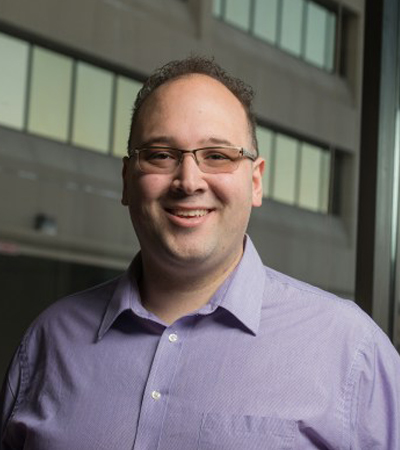 Center ICE is pleased to announce that Nigel Sharp has joined the team to serve as
the Startups and Innovation Manager. Nigel will work as a mentor, advisor, guest
lecturer, program developer and coordinator, and ecosystem builder. He will engage
UAF, the Fairbanks community, Alaska companies, and Alaska innovators and entrepreneurs.
Center ICE is pleased to announce that Nigel Sharp has joined the team to serve as
the Startups and Innovation Manager. Nigel will work as a mentor, advisor, guest
lecturer, program developer and coordinator, and ecosystem builder. He will engage
UAF, the Fairbanks community, Alaska companies, and Alaska innovators and entrepreneurs.
Nigel’s role at Center ICE will complement the position he is maintaining as the University of Alaska’s Global Entrepreneur in Residence, at which he has initiated a number of entrepreneurial community programs across Alaska including OTIS, Volt49 (archived website), Ideator, Growspace, and the Innovation Dash series.
You are invited to come by and learn more about what Nigel will be doing at the upcoming Center ICE Holiday Brunch on December 4th from 11:00 a.m. to 12:30 p.m. at Center ICE. Add a reminder to your calendar by clicking here.
In recent years, Nigel co-founded software companies, working on technologies ranging from voice recognition and gesture control to IT Network security. He has spoken at TEDx, judged, mentored or organized 22 Hackathons/Startup Weekends, and started businesses in six countries. He has participated in four business acceleration programs and has developed skills in lean startups and customer validation methodologies, which have all aided in his prior raises of venture funding and startup success. Feel free to add him on LinkedIn here and email him at nigel.sharp@alaska.edu.
* Nigel joins the Center ICE team just as former Center ICE Director Nickole Conley is transitioning out. Nickole has accepted a new position as UAF’s Executive Office, a position in the Chancellor’s Cabinet. Please join us in congratulating Nickole and wishing her great success.
Each month this column will highlight one or more recent disclosures of innovations developed at the University of Alaska Fairbanks and the University of Alaska Southeast.
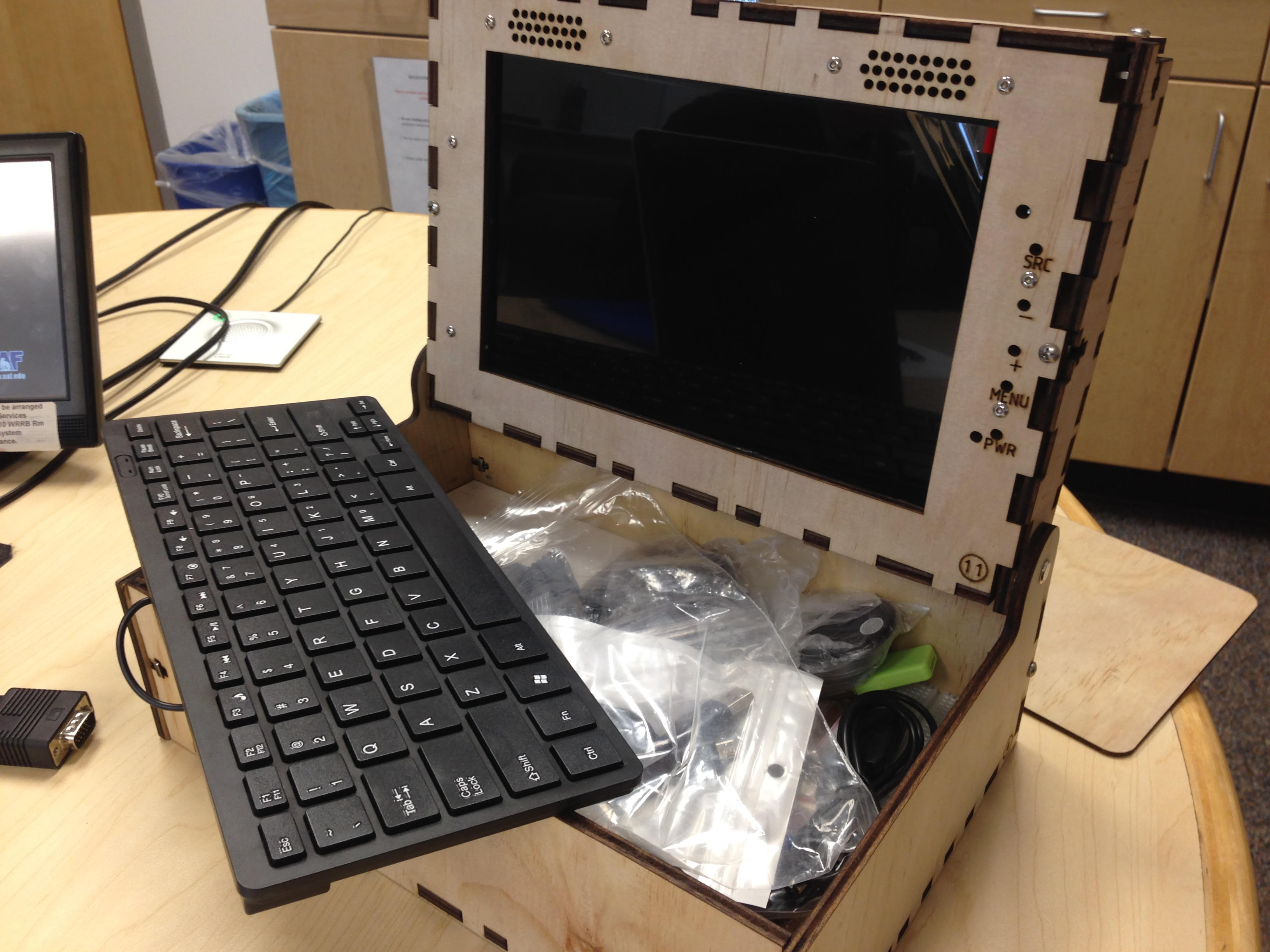
John Monahan has developed a curriculum that is delivered through the use of high-interest technologies for solving community problems. Photo by Mark Billingsley.
Innovative tools are redefining education. Most often, such tools are developed by educators like us. Over the years UAF has produced many innovative educational tools, including a recently-disclosed method for integrating technology into community problem-solving. John Monahan, Director of UAF's Upward Bound program, developed the curriculum and technology package with the assistance of UAF's EPSCoR program and support from the National Science Foundation.
Monahan has developed a curriculum based on various existing high-interest technologies for a unique take on community problem-solving. Not only does the product help solve problems, but equally important it also develops in students a growth mindset and teaches Design Thinking skills. The program incorporates Raspberry Pi, 3D printing, and autonomous vehicles. Monahan's product has been delivered to hundreds of students in Alaska and around the country, with dozens more Upward Bound program directors around the country expressing interest.
Let us know what innovative educational tools you've developed.
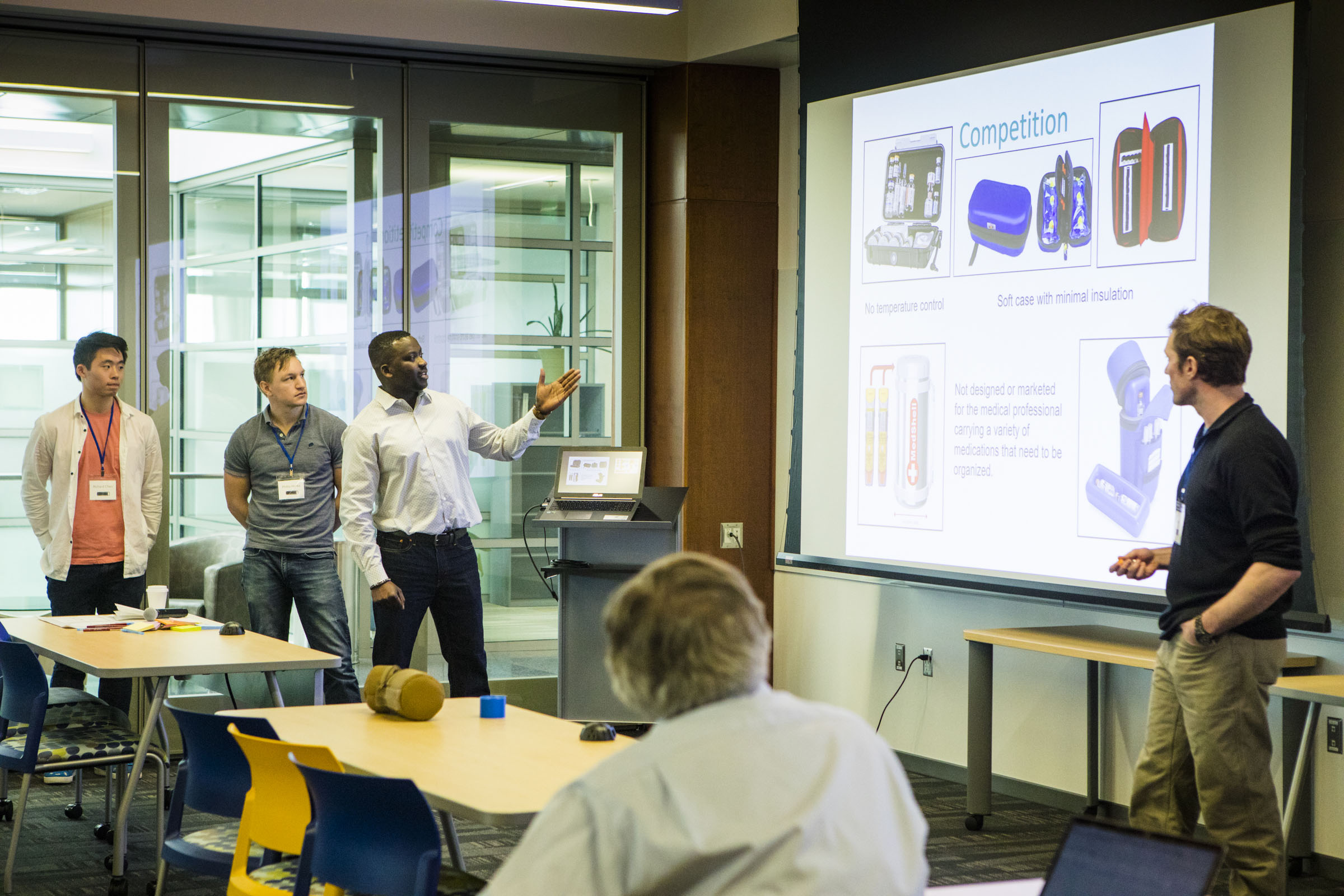
A team in the 2018 Lean Launch Workshop makes its final pitch. Photo by JR Ancheta/UAF.
Center ICE will hold its second annual Lean Launch Workshop during spring break on March 11th to 13th.
The program begins with online materials in February, continues with the in-person workshop over spring break, and then wraps up in April in time for the Alaska Business Plan Competition and the Alaska Angel Conference.
The workshop is ideal for faculty, students and staff interested in learning about commercializing their innovations and preparing for investment, I-Corp National Team applications, and SBIR funding.
The workshop, while using Stanford’s Lean Launchpad model, will bring more focus on investabilty and the steps to be taken after customer discovery. For more information and registration, contact Ky Holland at hrholland@alaska.edu or call 907-727-2735.
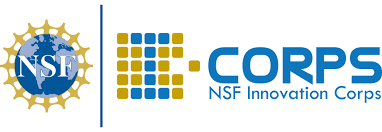 The University of Alaska’s Center ICE program has been awarded funding through the National Science Foundation I-Corps program for 24 teams each to receive a $2,500 award and training to conduct customer discovery
for their research.
The University of Alaska’s Center ICE program has been awarded funding through the National Science Foundation I-Corps program for 24 teams each to receive a $2,500 award and training to conduct customer discovery
for their research.
Teams will receive funding that can be used for travel or other costs of conducting customer and market research. The training will be available in various forms including the Hacking for Defense Class (see below), the Lean Launch Workshop (see above), and a Center ICE I-Corp program (details forthcoming). Teams can learn more and apply now by contacting Alexis Rhynard at aarhynard2@alaska.edu.
Each team should include a technical lead, an entrepreneur lead, and a mentor. Team members can come from the community or the university, including student senior projects or clubs. The mentor lead can be from the community or one of the Center ICE Ambassadors (Peter Webley, Eran Hood, or Robert Coker) or OIPC staff (Ky Holland, Nigel Sharp, or Mark Billingsley).
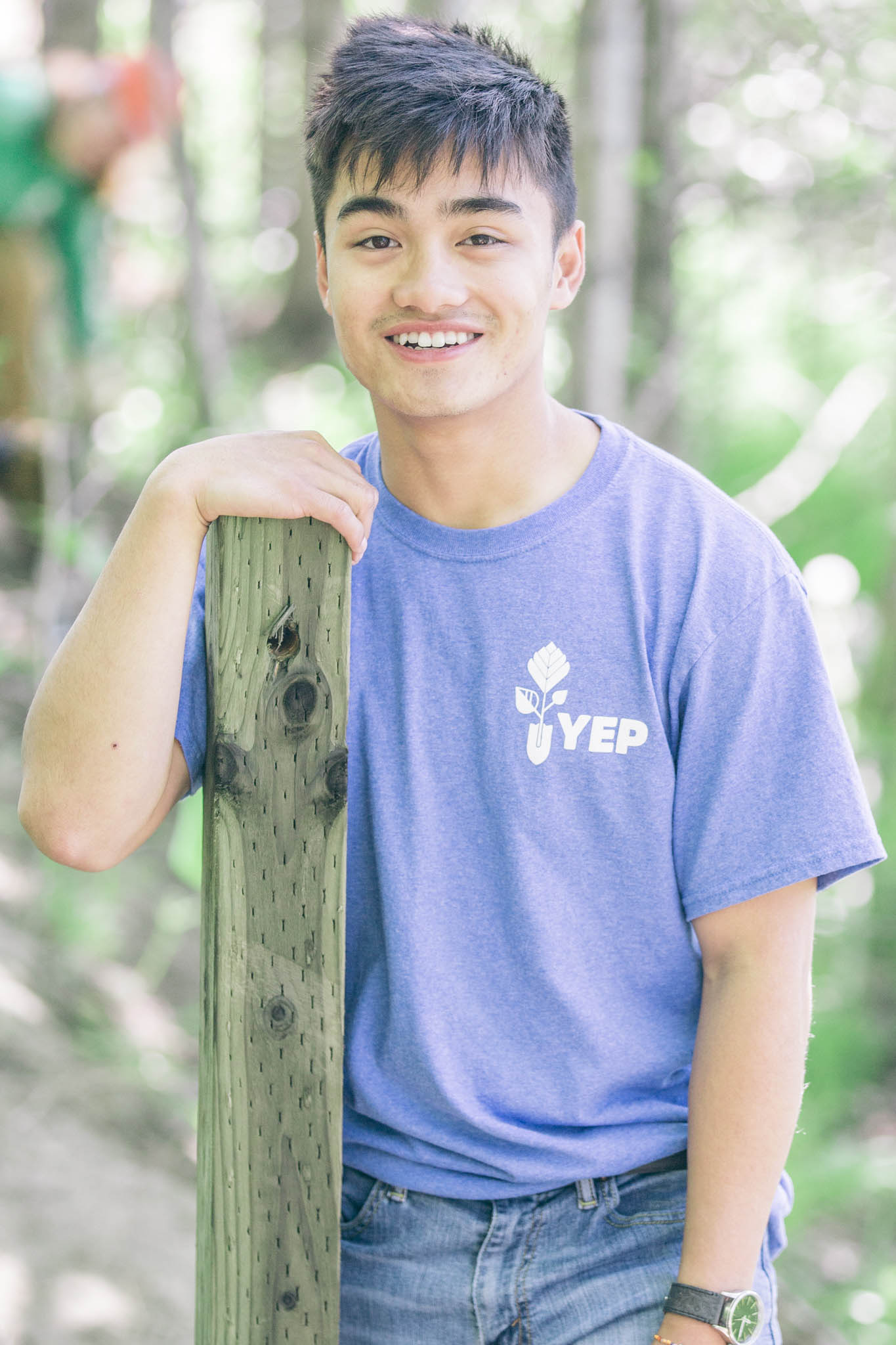
Montuya is an intern at OIPC for the 2018-19 academic year. Photo courtesy of Gerald Montuya.
Tech transfer offices around the country do more than just help turn research into reality. They also spur economic development, increase research funding, promote a culture of innovation and entrepreneurship, and enhance the academic experience. Gerald Montuya is an intern at OIPC and shares his experience.
“OIPC has given me a deeper appreciation and understanding of the applications for the coursework that I'm currently enrolled in. As a student pursuing a degree in Mechanical Engineering, I'm exposed to various sciences and mathematics. From the classroom to the work desk, I can see the applications of what I learn in the incredible technology and innovations UAF discovers. I've learned the importance of research and intellectual property and I look forward to seeing how it can drive the university to greater heights.” Gerald explained.
“One thing that has surprised me while working at OIPC is the number of connections I've made during my short time here,” said Gerald. “I've met incredible people at various events all supporting the same theme of innovation. From the Arctic Innovation Competition to the Fairbanks Startup Weekend, I've had the pleasure of connecting with people passionate about Fairbanks' potential.”
Story by Heather Rebekah McFarland
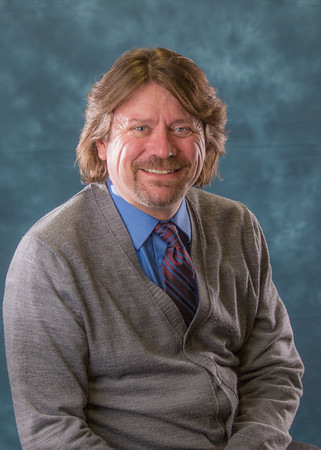 University of Alaska Fairbanks researcher Keith Cunningham has created a tool that
urban planners and tax assessors can use to detect infrastructure changes.
University of Alaska Fairbanks researcher Keith Cunningham has created a tool that
urban planners and tax assessors can use to detect infrastructure changes.
Property taxes are assessed based in part on the size of structures. Cunningham’s remote sensing method, which was patented last month, can alleviate the need to physically survey buildings to detect changes in their value.
Cunningham is a researcher affiliated with the Scenarios Network for Alaska and Arctic Planning, a group within UAF’s International Arctic Research Center.
His patented method, called “Management of Tax Information Based on Topographical Information,” uses remote sensing to reveal changes in buildings and new construction. The tool integrates remote sensing data with community records of parcel ownership and property dimensions.
“This particular patent is geared toward entire cities — being able to compare all of Seattle one year to all of Seattle the next,” Cunningham said. “Any country on the globe that does property taxation would be a candidate for this type of technology.”
Cunningham’s technique has broad application in other fields as well. It can be used to track changes in critical pipelines, bridges, and roads. Disaster managers can use it to assess economic losses of properties destroyed in forest fires or other natural disasters.
Cunningham and the UAF Office of Intellectual Property and Commercialization plan to work together to market the new tool.

Hackathon led by Ryan Stonebraker and Tristan Van Cise; held at the BP Design Theater and hosted by UAF’s Cyber Security Club. Photo by Peter Webley, OIPC Faculty Ambassador.
Alaska Startup Week, held from November 12th to 18th, featured over 70 events in 8 Alaska communities, including 17 here in Fairbanks.
From business and invention pitches on the UAF campus to new product launches at Venue in downtown Fairbanks to open houses at several businesses in the Fairbanks community, the events appealed to a wide range of Fairbanksans. Students were in on the action: local middle school students participated in a science night, and UAF undergraduate students presented their innovative works.
More than 300 people participated in Alaska Startup Week events in Fairbanks. For some, this was their first to exposure to Fairbanks’ entrepreneurial community, while others further developed their network and sought out new innovative businesses.
OIPC ambassador Dr. Peter Webley was the Fairbanks co-lead, along with Juliet Shepherd of the Fairbanks Economic Development Corporation, of Alaska Startup Week in Fairbanks.
November
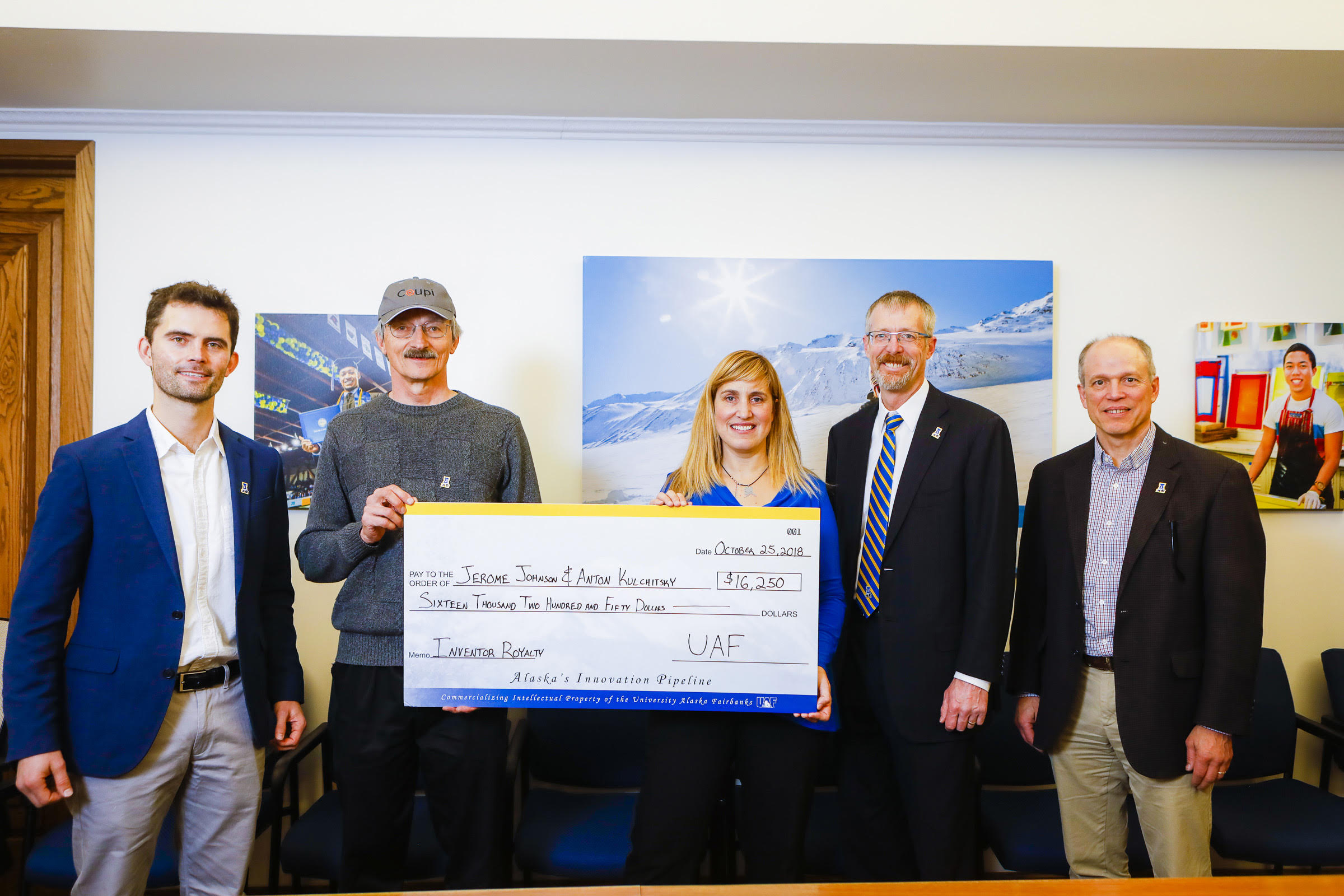
Jerry Johnson receives a check from OIPC’s Gwen Holdmann for the startup’s first share of their revenue. UAF photo by JR Ancheta.
Recently, Coupi, Inc., founded by former UAF professors Jerry Johnson and Anton Kulchitsky, and based on a technology developed during their time at UAF, has reached greater levels of success.
Coupi develops and sells physics simulation software as well as provides services related to the software. Recently, Coupi secured a second round of funding and began generating income. Additionally, the UAF-based startup has returned licensing revenue to the University and in turn, pursuant to UAF policy, back to the inventors.
We look forward to following Coupi as they continue their journey as a UAF startup company.
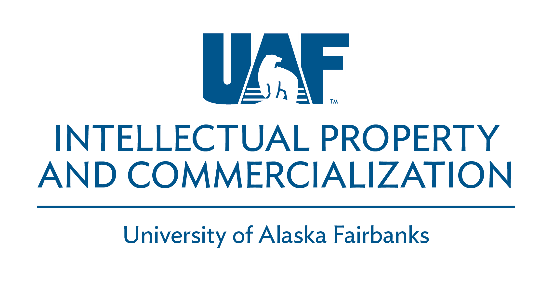 Through your research at UAF and UAS, you may be sitting on some commercially valuable
innovations. These innovations can help both you and the university. In fact, your
innovations could be world-changing.
Through your research at UAF and UAS, you may be sitting on some commercially valuable
innovations. These innovations can help both you and the university. In fact, your
innovations could be world-changing.
After you disclose your innovation to OIPC, we’ll handle just about all the legwork including patenting and commercialization. Just let us know what you are working on. Disclose Now!
Who: UAF and UAS faculty, staff, and students from all departments
What: Anything that you’ve created. If you aren’t sure, then don’t hesitate to ask us (uaf-oipc@alaska.edu or 474-2605). The range of what can or should be disclosed is far broader than you think. Also, you can err on the side of disclosing, and we’ll just follow up with you to talk about it.
How: So simple. Just visit OIPC website and fill out the form.
When: Now! Err on the earlier side because waiting can undermine intellectual property rights.
Why: We can help make your research into reality! And so many other reasons: it’s required by federal regulation, it might result in a publication under your name, you could earn financial royalties, it helps your college or department, it contributes to economic development, you can be entered at your discretion into an annual innovation competition with cash prizes, and more.
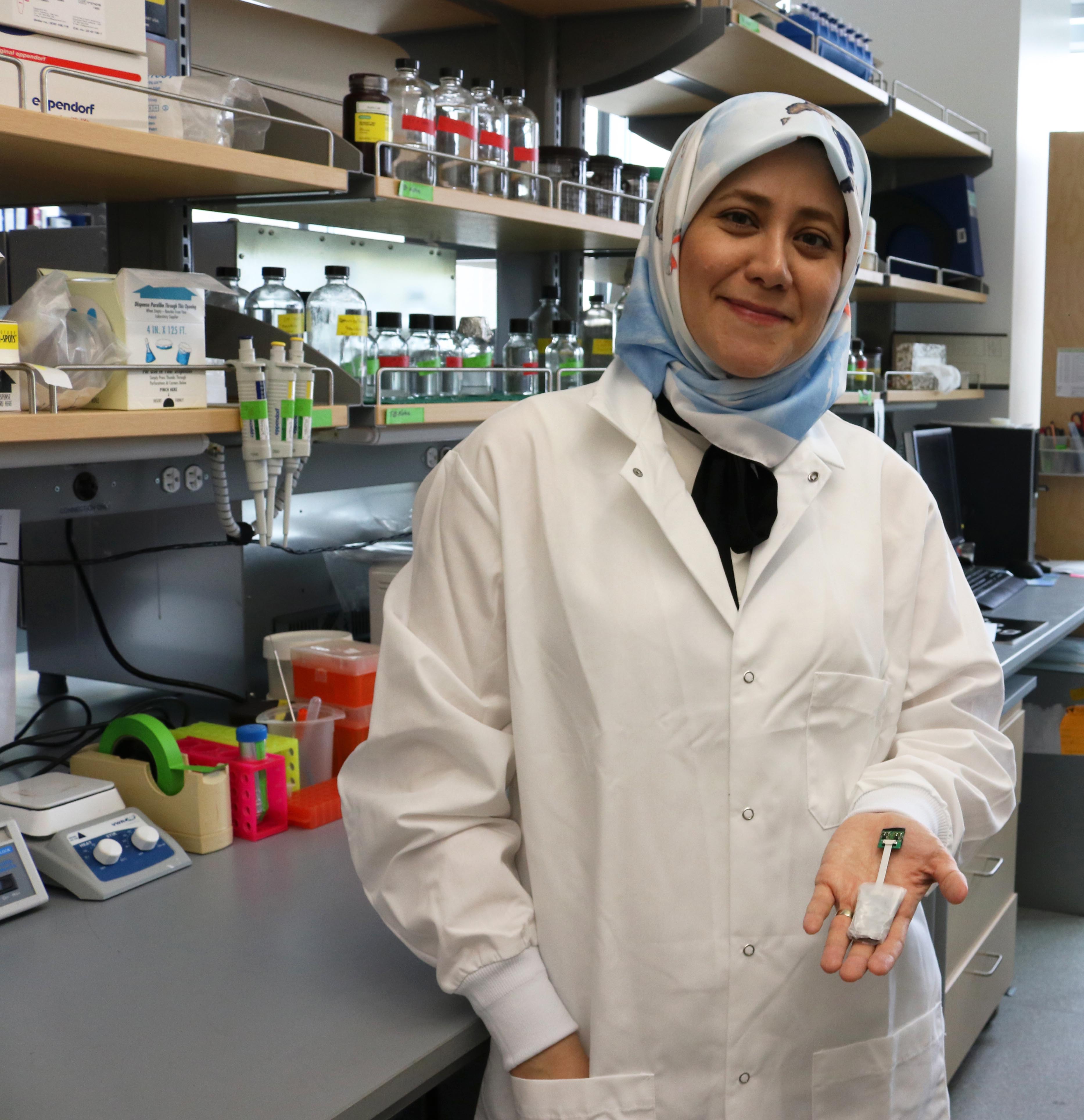
Bahareh Barati is one of eight recipients in the first round of the Center ICE Seed Fund. Photo by Amanda Byrd.
Eight ideas recently submitted to the first round Center ICE Seed Fund received funding ranging from $5,000 to $25,000.
The Center ICE Seed Fund is designed to boost commercialization success, entrepreneurialism, and innovation at the University of Alaska and throughout Alaska. The Center ICE Seed Fund invests directly in people, technologies, and commercialization efforts.
Winning proposals came from Alaska startups such as Coupi, Inc. and Rhizofoam, LLC. as well as university researchers including Chris Sannito and Bahareh Barati – each developing technologies and business opportunities that will capitalize on funding to reach commercial success.
We will be following the eight recipients over the coming months and will keep you updated about their progress!
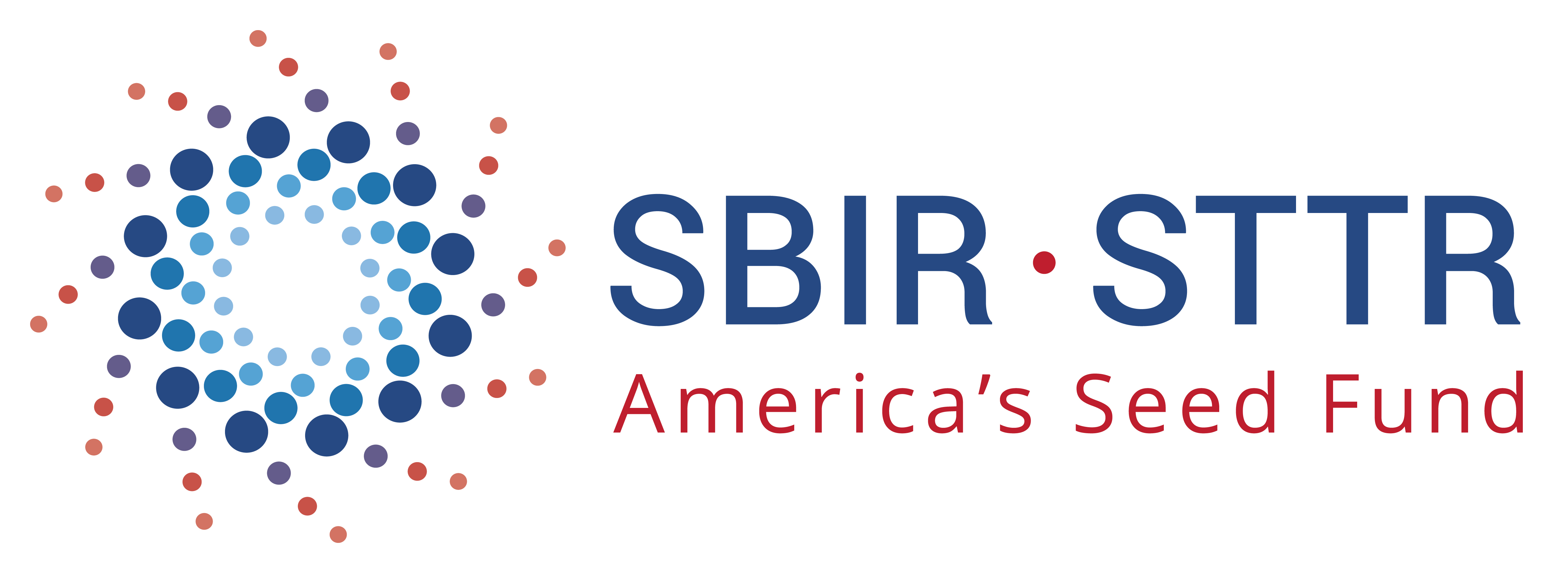 Are you looking for a little extra funding to develop your technology? Are you interested
in an SBIR grant but don’t want to tackle setting up a company. This is your solution:
The National Science Foundation’s Partnerships for Innovation (PFI) program.
Are you looking for a little extra funding to develop your technology? Are you interested
in an SBIR grant but don’t want to tackle setting up a company. This is your solution:
The National Science Foundation’s Partnerships for Innovation (PFI) program.
Proposals need a strong business case for the technology’s commercial potential. NSF’s program manager recommends working with a business mentor or your technology transfer office, in this case, UAF’s Office of Intellectual Property and Commercialization, on your proposal. Additionally, UAF’s new I-Corps program is designed by NSF to help researchers develop PFI proposals.
PFI recipients increase the value of their technology and significantly increase their odds of winning an SBIR grant.
Sign up for an NSF webinar here. Email uaf-oipc@alaska.edu to receive a full slide-deck to learn more about the program. Find the FOA here. Funding is available twice per year, with January 17, 2019, being the next application deadline.
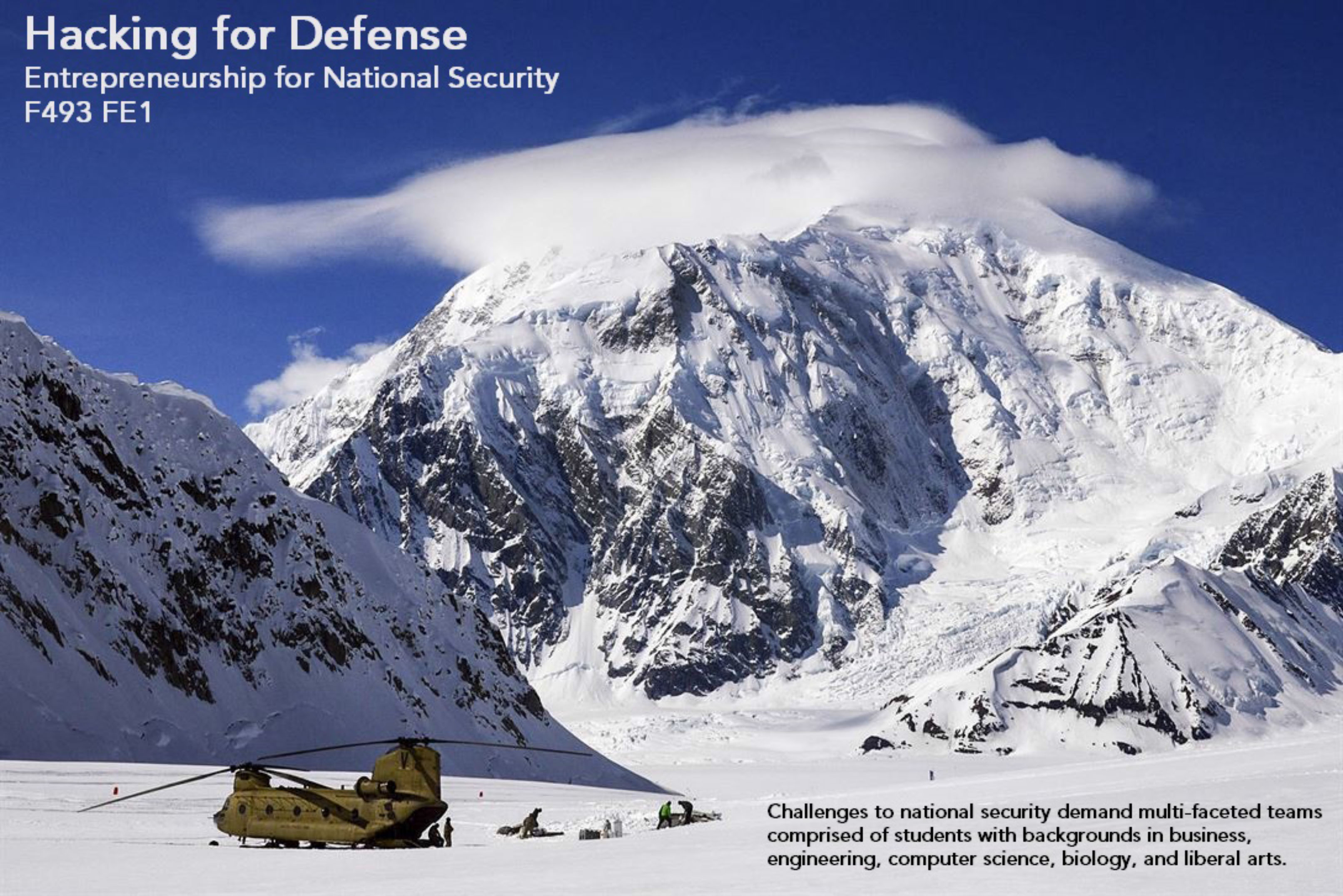 Imagine if you were part of a team that created the next ground-breaking innovation
that made military operations safer. A new UAF class is offering students that exact
opportunity.
Imagine if you were part of a team that created the next ground-breaking innovation
that made military operations safer. A new UAF class is offering students that exact
opportunity.
If you’re up to the challenge, Hacking for Defense™ (H4Di) will be the most unique, rewarding class you will ever take.
Offered through UAF’s School of Management, this course is not about computer hacking, rather it is uniquely designed for all students in all schools and programs as it takes an entrepreneurial, interdisciplinary, and fast approach to the challenges of national security.
UAF is joining top-ranked academic institutions like Stanford, Columbia, and Johns Hopkins University in offering H4Di.
Keep your eyes wide open for upcoming announcements about how to submit your enrollment application. We want students interested in public policy, engineering, computers, biology, entrepreneurs, physics, psychology, and the list goes on!
OIPC Ambassador, UAF faculty member, and biomedical entrepreneur Robert Coker obtained his H4Di certification to teach this course and is very excited to see the creative teams at UAF design some life-changing innovations. Contact Robert for more information.
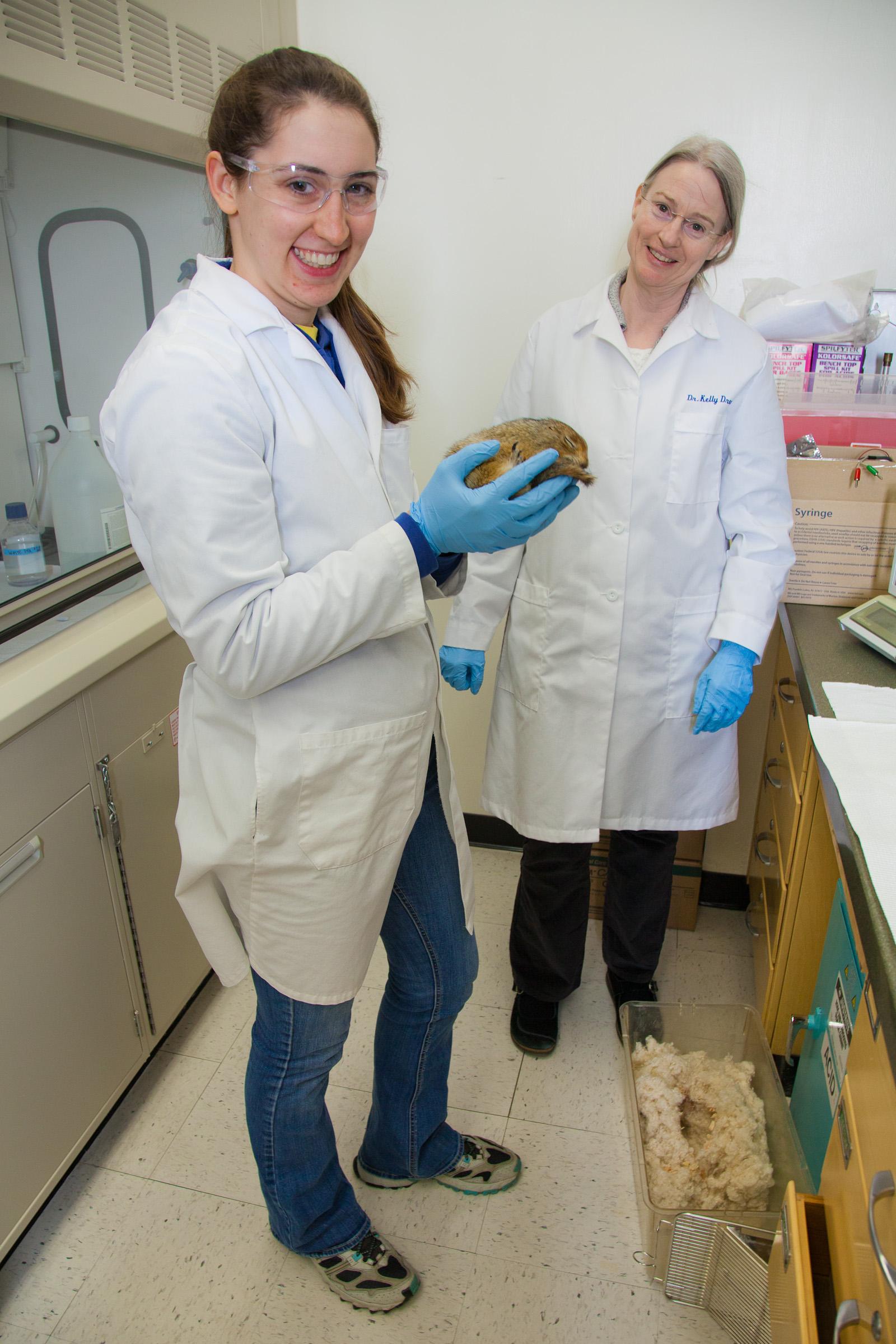
Kelly Drew (right) was one of the 2018 Alaska Innovation Hall of Fame inductees. UAF photo.
Do you know an Alaska innovator who has made contributions to benefit others through their work? If so, nominate them for the Alaska Innovators Hall of Fame or drop us an email at uaf-oipc@alaska.edu.
The Alaska State Committee on Research is seeking nominations for outstanding science, engineering, and technology innovators to be inducted into the SCoR Alaska Innovators Hall of Fame. Nominees selected by SCoR will be members of the 2019 class and will be inducted at the Innovation Summit held in Juneau on February 20-21, 2019. Nominations must be submitted no later than December 7, 2018.
Last year, inductees included Eric Swanson, Dr. Kelly Drew, Dr. Patricia Holloway, and the Tlingit, Haida and Tsimshian Halibut Hook.
To find out more about the Alaska Innovators Hall of Fame and to see the nomination criteria and process visit the program website.
October
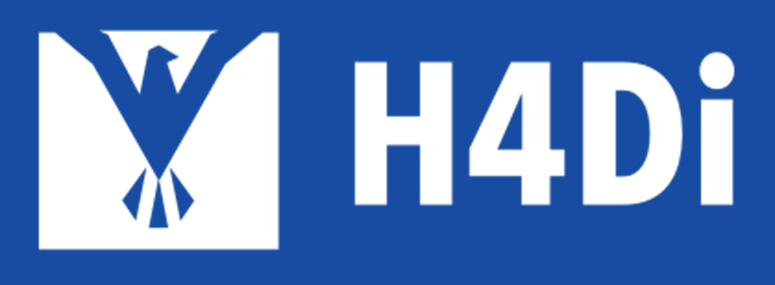 Hacking for Defense™ (H4Di) will be the most unique, rewarding and challenging class you will ever take!
Offered through UAF’s School of Management, this course is not about computer hacking! Instead, H4Di is uniquely designed for all students in all
schools and programs as it takes an entrepreneurial, interdisciplinary, and fast approach
to the challenges of national security.
Hacking for Defense™ (H4Di) will be the most unique, rewarding and challenging class you will ever take!
Offered through UAF’s School of Management, this course is not about computer hacking! Instead, H4Di is uniquely designed for all students in all
schools and programs as it takes an entrepreneurial, interdisciplinary, and fast approach
to the challenges of national security.
The H4Di class is brand new and has been offered by top-ranked academic institutions like Stanford, Columbia, and Johns Hopkins University. While some relaxed this summer, we at OIPC and Center ICE are always on the move. So, we sent one of our Ambassadors – UAF faculty member and biomedical entrepreneur Robert Coker – to Purdue University to obtain his H4Di certification to teach the course.
H4Di is a modern renaissance class – you will receive relentless feedback from your problem sponsors, mentors, military liaisons, corporate partners, investors and journalists that may be in the room while solving real problems for real customers, in real-time – and live-streaming every class on Facebook Live.
Keep your eyes wide open for upcoming announcements about how to submit your enrollment application. We want students interested in public policy, engineering, computers, biology, entrepreneurs, physics, psychology, and the list goes on!
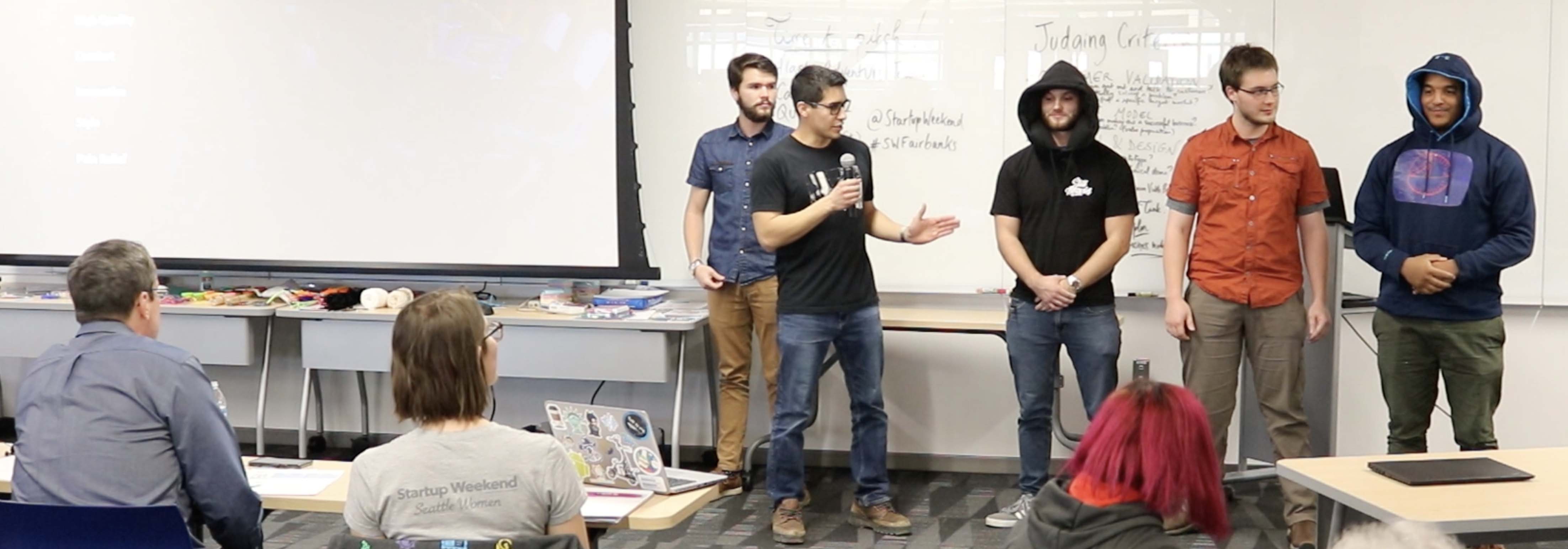
The Armadillow (now Hoodillow) team presenting their final pitch. Photo by Amanda Byrd
In 54 hours, ideas can change, teams can split up, and successful entrepreneurial ventures can be created. That’s exactly what happened last week during Fairbanks Startup Weekend. The event drew over 40 budding entrepreneurs. Some pitched their ideas while others watched and calculated which teams they might join.
Initial ideas ranged from a cat café and a car windshield that warns drivers of upcoming hazards to virtual gamers who could replace someone out of internet range. The weekend’s winners spent their 54 hours interviewing anticipated customers, building prototypes, and developing business models – some of them pivoting from an initial idea to something very different.
The winning team, Armadillow, created a padded neck wrap that doubles as a hooded travel pillow. The team, made up of junior and senior engineering students, used customer validation at the Fairbanks International Airport to determine that weary travelers would like to have a padded hood when traveling to make their flights more comfortable.
Other winning teams included Icebreaker, which developed an app to help millennials overcome social anxiety through meeting for topical conversations in public places; and Alaska Adventure Tours, which developed a platform to market, book, and pay for authentic Alaskan tours. The winning team, Armadillow, earned free entry into the upcoming Arctic Innovation Competition, free business financial consulting, and other great prizes. The Alaska Adventure Tours team won free entry into the Alaska Travel Industry Association’s tourism startup pitch contest.
 The University of Alaska Fairbanks has been designated as a National Science Foundation Innovation Corps (I-Corps) Site. With this designation, UAF will receive a three-year, $255,000 grant
to accelerate the development of customer-driven research and transition it to the
marketplace.
The University of Alaska Fairbanks has been designated as a National Science Foundation Innovation Corps (I-Corps) Site. With this designation, UAF will receive a three-year, $255,000 grant
to accelerate the development of customer-driven research and transition it to the
marketplace.
The I-Corps Site will be implemented by UAF’s Office of Intellectual Property and Commercialization (OIPC) and UAF’s Center for Innovation, Commercialization, and Entrepreneurship (Center ICE). The initiative at UAF will now become an important part of a national innovation ecosystem that translates basic and applied research to the development of technologies, products, and processes that ultimately benefit society.
“We are thrilled to be selected as an NSF I-Corps Site. This really recognizes the significant market potential of UA research. Years of building OIPC and Center ICE programming, along with strong support from university administration – especially Larry Hinzman, Dan White, and Jim Johnsen, got us to this stage from which we could compete and now win this prestigious grant,” said Mark Billingsley, co-PI on the grant. He further mentioned that “Between the growing interest among faculty and students in innovation and entrepreneurialism and the increased resources to support them, this is an exciting time at the university.”
Each team that participates will receive around $2,500 to create a prototype, travel to consult with potential clients or obtain further training. Successful teams will be eligible to apply for the NSF’s national I-Corps program to receive up to $50,000 of additional funding to continue with their commercialization efforts.
Billingsley explained that “the I-Corps curriculum is challenging, but that’s the point. Products and businesses succeed because they’re meeting true customer needs. The knowledge and skills required to assess customer needs are valuable beyond the commercialization context: they help everyone approach their work – whatever that may be – more entrepreneurially.”
As the program is launched in the coming months, look for more information in this newsletter. Also, you can contact OIPC at uaf-oipc@alaska.edu.
September
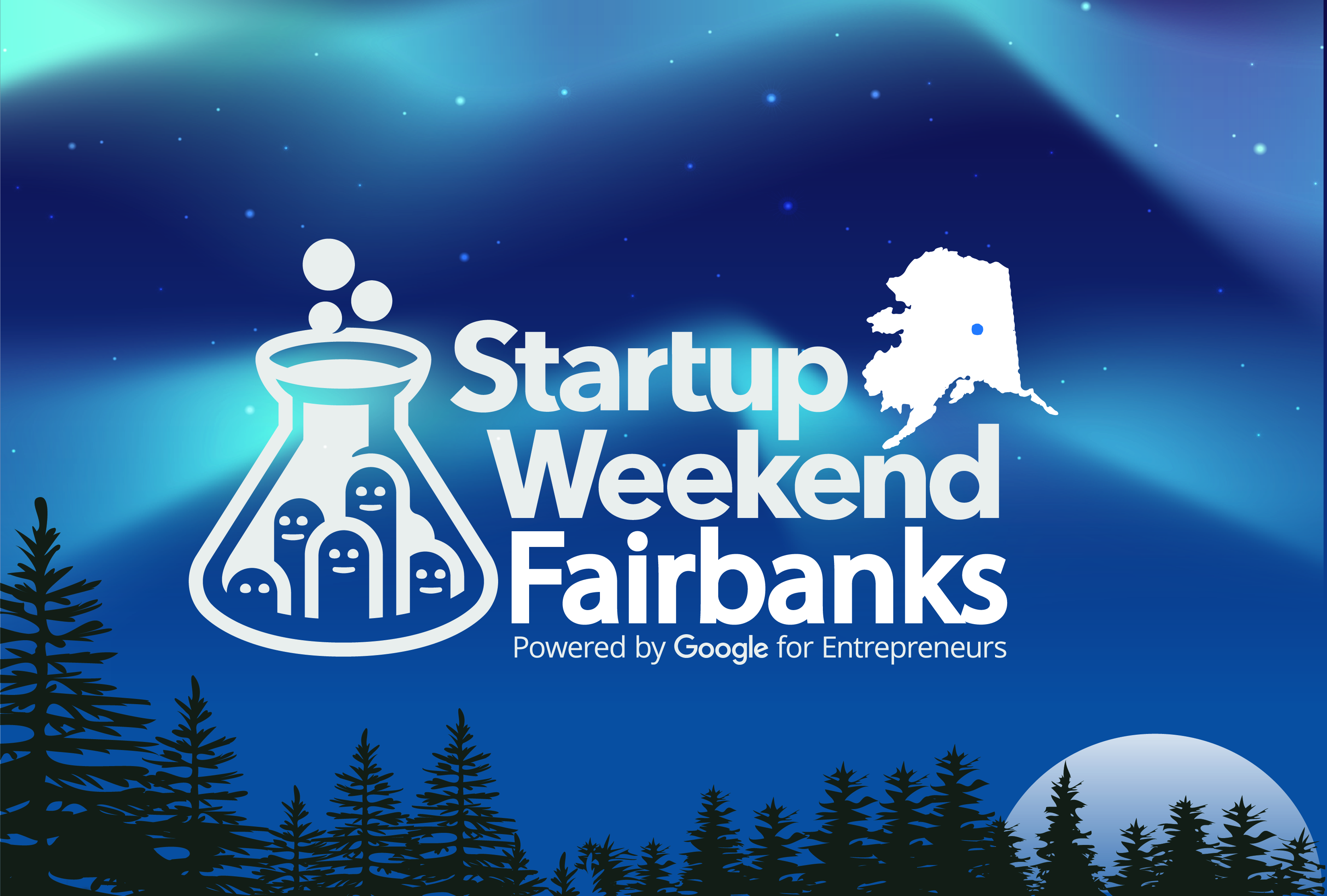 54 hours of fun during which you’ll experience the challenges and thrills of developing
your idea into a marketable product or launching your own business. Come with your
own idea, or join a team and coalesce around someone else’s idea.
54 hours of fun during which you’ll experience the challenges and thrills of developing
your idea into a marketable product or launching your own business. Come with your
own idea, or join a team and coalesce around someone else’s idea.
Startup Weekend is an event for innovators, inventors, entrepreneurs, developers, designers, marketers, product managers, students, and people of all ages and levels of experience. All are welcome! Registration includes all meals for the weekend. Student & military discounts are available. A limited number of scholarships are available upon request.
Startup Weekend is a well-established program with events held every weekend at cities around the world. This year’s Fairbanks Startup Weekend facilitator works on Amazon’s Alexa project in Seattle, and many of the coaches and mentors have extensive success in launching startup companies and developing products.
This event is being presented through a collaboration between the Fairbanks North Star Borough, the Alaska Small Business Development Center, the Office of Intellectual Property and Commercialization, and Center ICE. Additional sponsors include the Arctic Innovation Competition, Verus Corporation, V-ADAPT Inc (archived website)., Alaska Startups, Tanana Chiefs Conference, the College of Engineering and Mines, the UAF School of Management, and Pagesculptor Studios.
Learn more at Startupweekend
Visit our event’s website and register at Startupweekend - Fairbanks
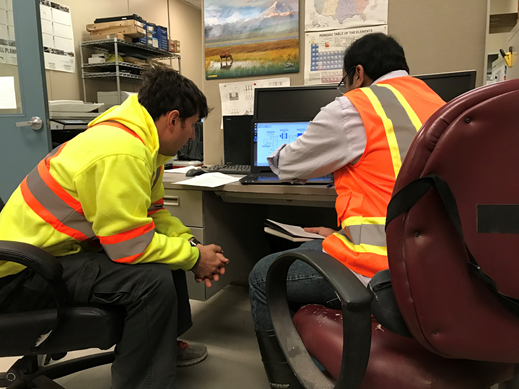
Students work on a training mill simulator at Pogo mine. Photo by Aibyek Khamkhash.
Students: Looking for a project topic for one of your classes?
Faculty: Looking for projects for your students?
Alaska community members: Have a real-world problem that that college students might be able to help with?
Submit your own challenge or check out the many great problems that already have been submitted.
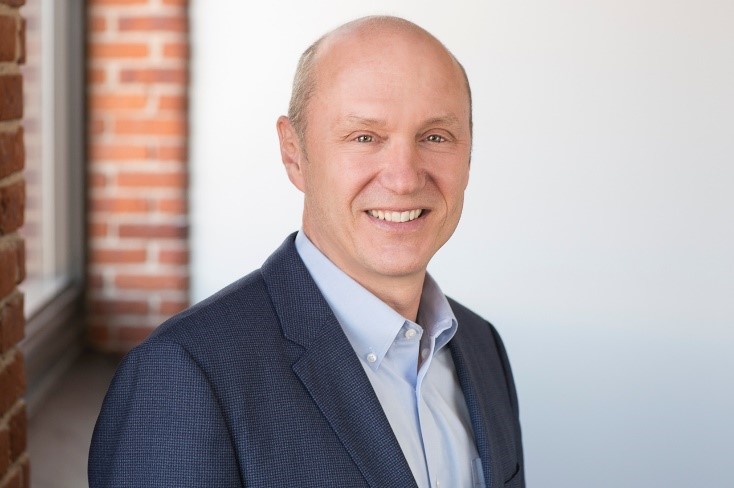
Eric Swanson will present at the next I2 event. Photo courtesy of Eric Swanson.
The next Innovation Initiative event with guest speaker Eric Swanson will be on Thursday, September 27th at 4:30 pm in the ELIF Design Theater.
Eric Swanson was raised in Fairbanks and now serves in a variety of technical and managerial roles in academic, entrepreneurial, industrial, and nonprofit settings.
In 2018, Swanson was inducted into the Alaska Innovators Hall of Fame (short biography Here (PDF)) for his innovations and the founding of numerous startup companies. These companies have evolved over time and have shipped several billions of dollars in products around the world.
Swanson will present his thoughts on “Innovation and Entrepreneurship."
For information about future I2 events, please contact the OIPC ambassadors Robert Coker, Peter Webley, and Eran Hood.
By Bahareh Barati

Bahareh Barati holds a prototype of her wireless brain-imaging instrument. Photo by Amanda Byrd/OIPC.
Trained as a biomedical engineer, I joined Dr. Kelly Drew’s lab in the Institute of Arctic Biology to pursue research training in neuroscience and physiology in 2013. I was awarded a two-year postdoctoral fellowship by the American Heart Association to study cardiovascular side effects of drug-induced therapeutic hypothermia, an established neuroprotective intervention for survivors of cardiac arrest and a potential treatment for ischemic stroke patients.
My entrepreneurship adventure began in 2015 by founding Barati Medical, LLC in partnership with my Ph.D. advisor at Drexel University, Dr. Kambiz Pourrezaei. Since then, we have designed, fabricated, and tested a miniaturized, wireless brain-imaging instrument for freely moving small animals. Now I can be the Principal Investigator of my project, so I submitted an SBIR grant proposal to NIH to establish the feasibility of our device in estimating brain ischemia after stroke. My proposal has received a score from the review committee and is now waiting on the decision from an advisory council meeting in early September. I am very excited about the great opportunities that this grant would bring to my company and to UAF. During the animal studies, I realized that there is a gap between applied engineering and basic science research. This gap fosters a demand for better tools and instruments to improve preclinical studies, which are fundamental to the development of groundbreaking clinical trials. In order to transform my innovative ideas into practice, I needed research funding. But, as a postdoctoral fellow, I was not eligible to serve as a Principal Investigator on federal grants. When my mentor prompted me to start my own company to further develop my innovation, I was stunned. Dr. Drew, a grantee herself, informed me about Small Business Innovative Research (SBIR) and Small Business Technology Transfer (STTR) grants from the National Institutes of Health (NIH), which provide a source of funding without diluting the ownership of the company. These grants are a great way to promote innovation and commercialization in collaboration with academia.
I am truly grateful for the valuable advice and support I have received from OIPC staff and ambassadors regarding IP protection through a provisional patent application, funding for grant writing, and sponsored events such as the recent SBIR Road Tour, which was a great networking opportunity to have face-to-face meetings with program managers of several federal agencies. As an Iranian immigrant, I have faced many challenges and barriers in my journey. However, the institutional and federal support of my innovation reminds me of my American Dream: that I have an equal opportunity to achieve success through my hard work, determination, and initiative. I am thrilled to be a part of UAF entrepreneurial initiative and to be doing work that has the potential to impact human health.
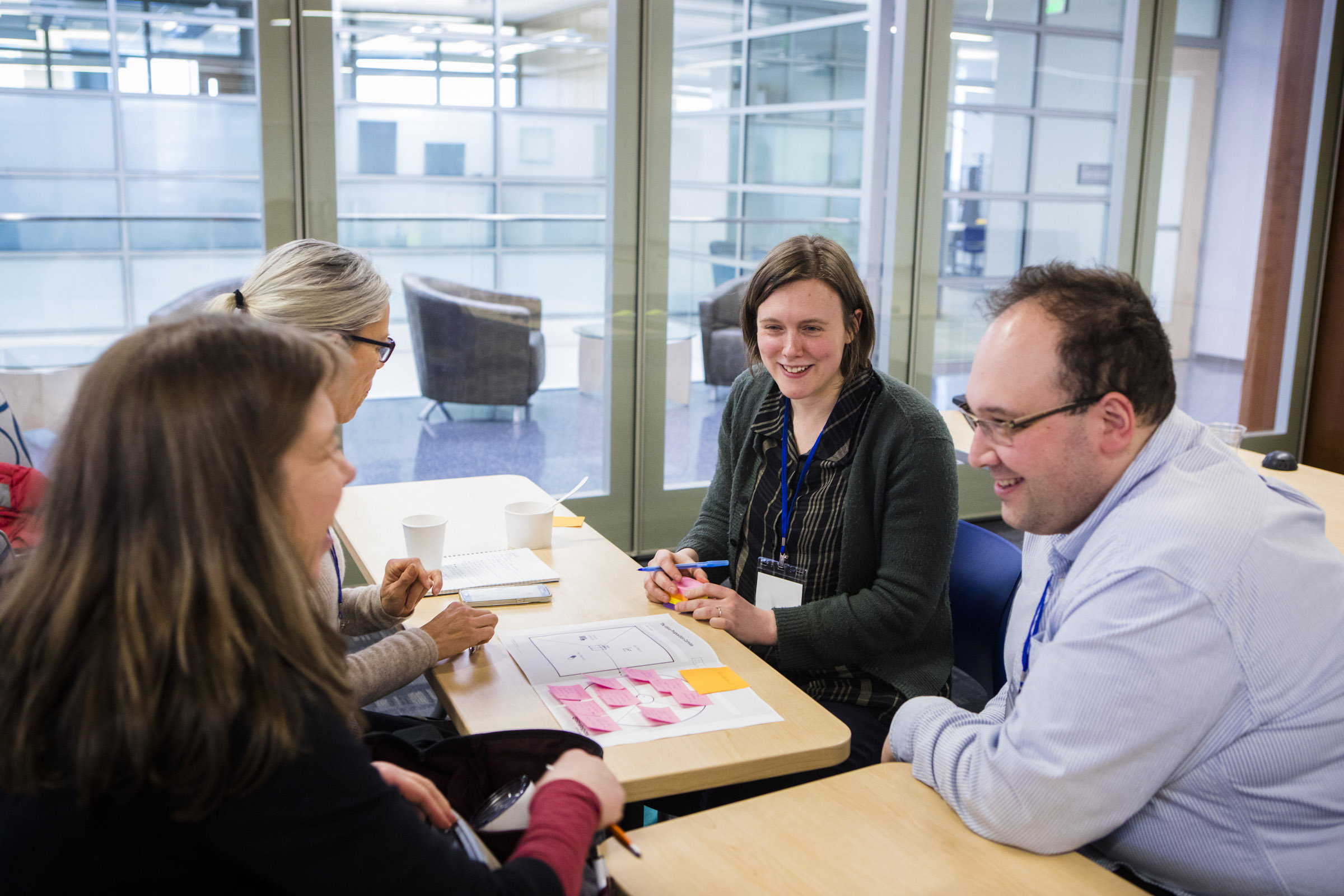
UAF photo by JR Ancheta.
The Center for Innovation, Commercialization, and Entrepreneurship is seeking student interns for the fall semester to work with university startup companies.
Applicants should be motivated students from all backgrounds (business, engineering, science, liberal arts) with at least a 3.0 GPA and who are interested in gaining experience related to innovation and entrepreneurship.
August
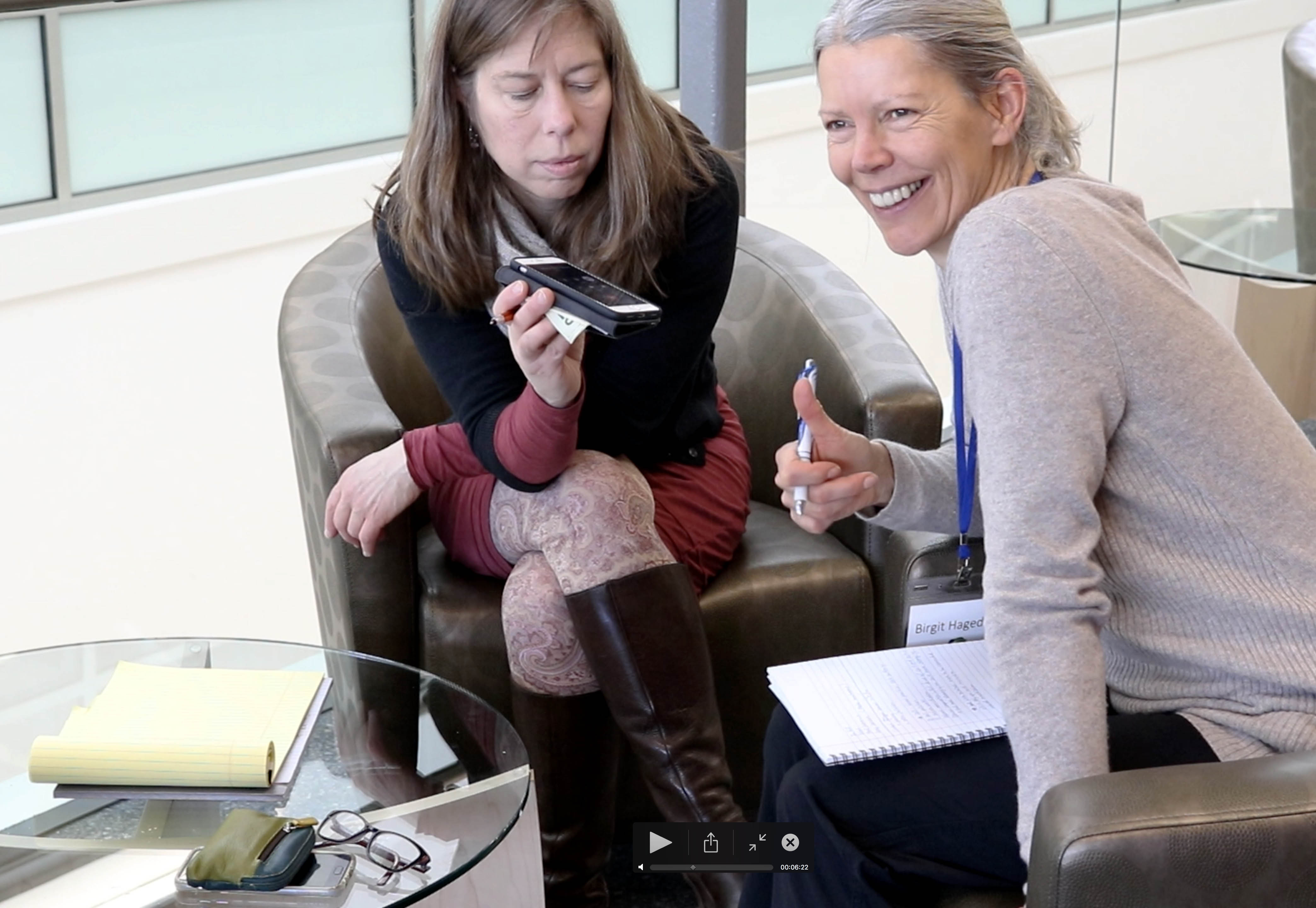
Birgit Hagedorn and Jacqueline Summers conduct market research during the 2018 Lean Launch Workshop. Photo by Amanda Byrd.
As we prepare for another great academic year, let’s take a moment to reflect on the year that has passed. Over the past twelve months, OIPC staff members – along with a multitude of partners – have worked tirelessly to advance university research through industry partnerships and to build a culture of innovation and entrepreneurship.
- The year kicked off with big changes: Gwen Holdmann joined OIPC as the new director, and Dan White, OIPC’s founding director, was selected as the new UAF Chancellor.
- OIPC also welcomed its first round of Ambassadors: Rajive Ganguli, Peter Webley, and Robert Coker. As the Ambassadors went about promoting technology commercialization, they saw a need for a regular gathering of like-minded people and thus launched the Innovation Initiative (I2) event series.
- OIPC also launched the Center for Innovation, Commercialization, and Entrepreneurship (Center ICE) Innovation Hub.
- Over Spring Break, OIPC hosted Alaska’s first Lean Lean Workshop as part of a new partnership with the Office of Naval Research.
- UAF faculty, staff, and students pursued new startup companies, and UAF licensed more technologies. OIPC also worked with inventors on new technologies, such as Brandt Lomen’s pseudo-sun instrument, which took first place in the Invent Alaska competition.
- The year wrapped up with OIPC hosting the SBIR Road Tour and welcoming Ky Holland as OIPC’s Technology Commercialization Officer.
This year, the Alaska legislature and governor memorialized their commitment to innovation and entrepreneurialism when they declared 2019 the Year of Innovation. We plan to leverage their support and keep up the momentum. Among other things:
- OIPC is offering the Center ICE Seed Fund and will be offering the Alaska Seed Fund
- We’re welcoming the newest Ambassador from UAS, Eran Hood
- We’re looking forward to another great year of I2 events, the Invent Alaska Competition, and the Lean Launch Workshop
- We’re working with partners to develop a lean startup methodology semester-long course
- Center ICE will continue to ramp up its operations
- We’re opening new channels for industry partnership
- We’re working to send UA’s first team to the National Science Foundation’s I-Corps Team program
- OIPC is working with partners to host another successful year of the Fairbanks Startup Weekend event this September
Thank you for all your help over the past year and for your contributions to innovation and entrepreneurialism in Alaska. Now, let’s roll up our sleeves and make the next year our best yet!
 Anchorage’s 49th State Angel Fund recently announced it will partner with Wells Fargo, UAA BEI’s Small Business Development Center, and OIPC to support another year of the Alaska Seed Fund. First offered in 2017,
the Alaska Seed Fund supports entrepreneurs in prototyping, conducting studies, validating
customers, and gaining market traction. Read the press release here.
Anchorage’s 49th State Angel Fund recently announced it will partner with Wells Fargo, UAA BEI’s Small Business Development Center, and OIPC to support another year of the Alaska Seed Fund. First offered in 2017,
the Alaska Seed Fund supports entrepreneurs in prototyping, conducting studies, validating
customers, and gaining market traction. Read the press release here.
Stay tuned for more information on how to apply and deadlines.
 What is Fairbanks Startup Weekend? In just 54 hours, you will experience the highs,
lows, fun, and pressure that makeup life at a startup. As you learn how to create
a real company, you'll meet the very best mentors, investors, co-founders, and sponsors
who are ready to help you get started. Mark your calendar for September 28-30, and
get ready to be immersed in the ideal environment for startup magic to happen.
What is Fairbanks Startup Weekend? In just 54 hours, you will experience the highs,
lows, fun, and pressure that makeup life at a startup. As you learn how to create
a real company, you'll meet the very best mentors, investors, co-founders, and sponsors
who are ready to help you get started. Mark your calendar for September 28-30, and
get ready to be immersed in the ideal environment for startup magic to happen.
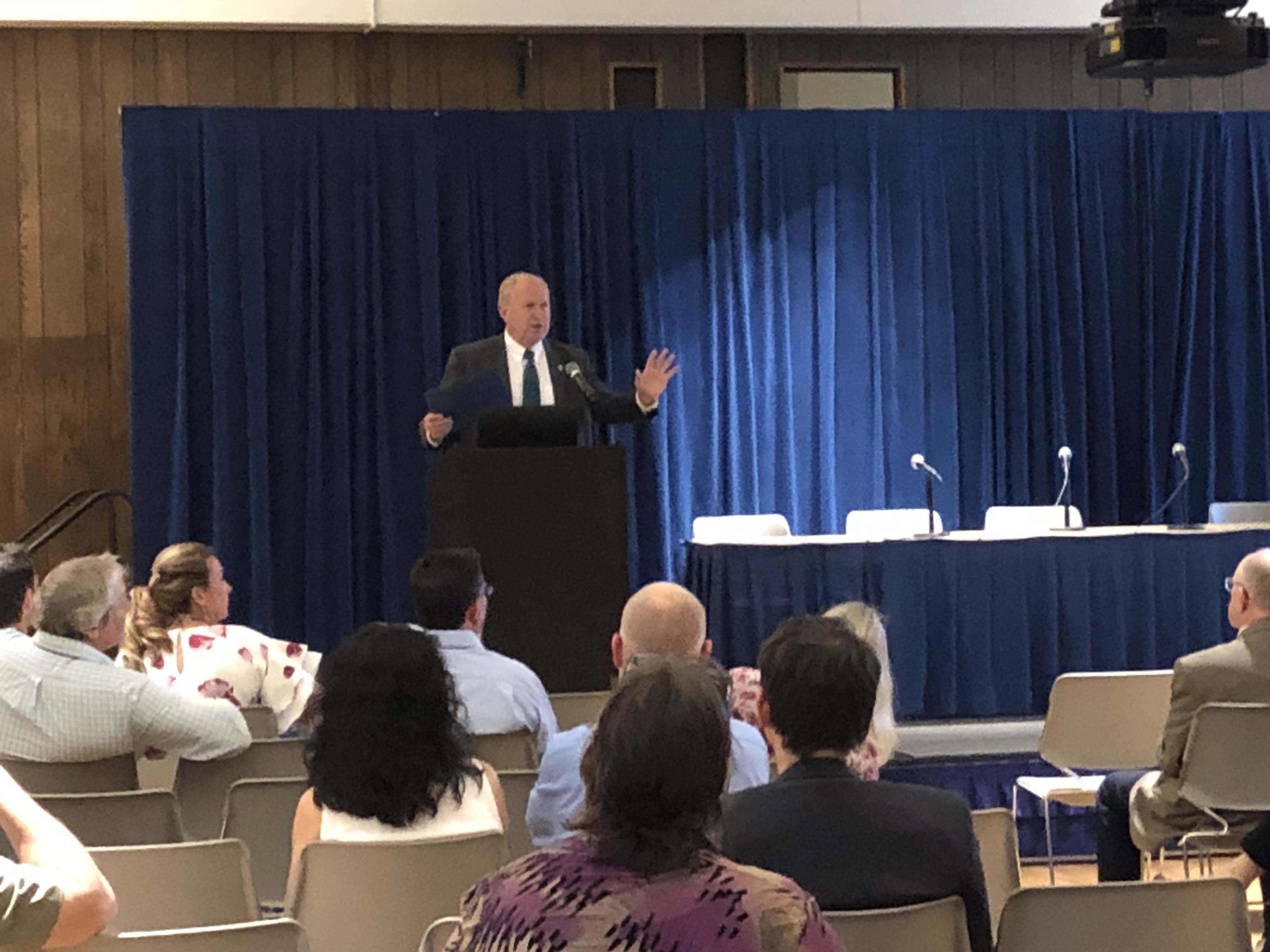
Governor Walker spoke to the attendees of the SBIR Road Tour. Photo by Peter Webley.
On July 21st, members of Alaska’s small business community came together with University innovators to learn more about federal SBIR and STTR grant opportunities. Attendees networked and had the unique opportunity to meet individually with federal program managers to learn how to best align their companies and innovations with federal priorities.
The federal SBIR/STTR program has been called the U.S.’s largest seed fund and a national treasure, with winners getting no-strings-attached funding to develop their ideas into marketable products.
During the morning sessions, attendees heard from federal employees about the application process and how to maximize chances for success. In the afternoon, various Alaskans talked about how SBIR’s fit into our burgeoning startup innovation ecosystem and about their experiences winning and operating under SBIR awards.
After lunch, Governor Walker spoke of the long-demonstrated ingenuity of Alaskans. Following Walker, UA President Johnsen talked about how “it takes a great university to make a great state.”
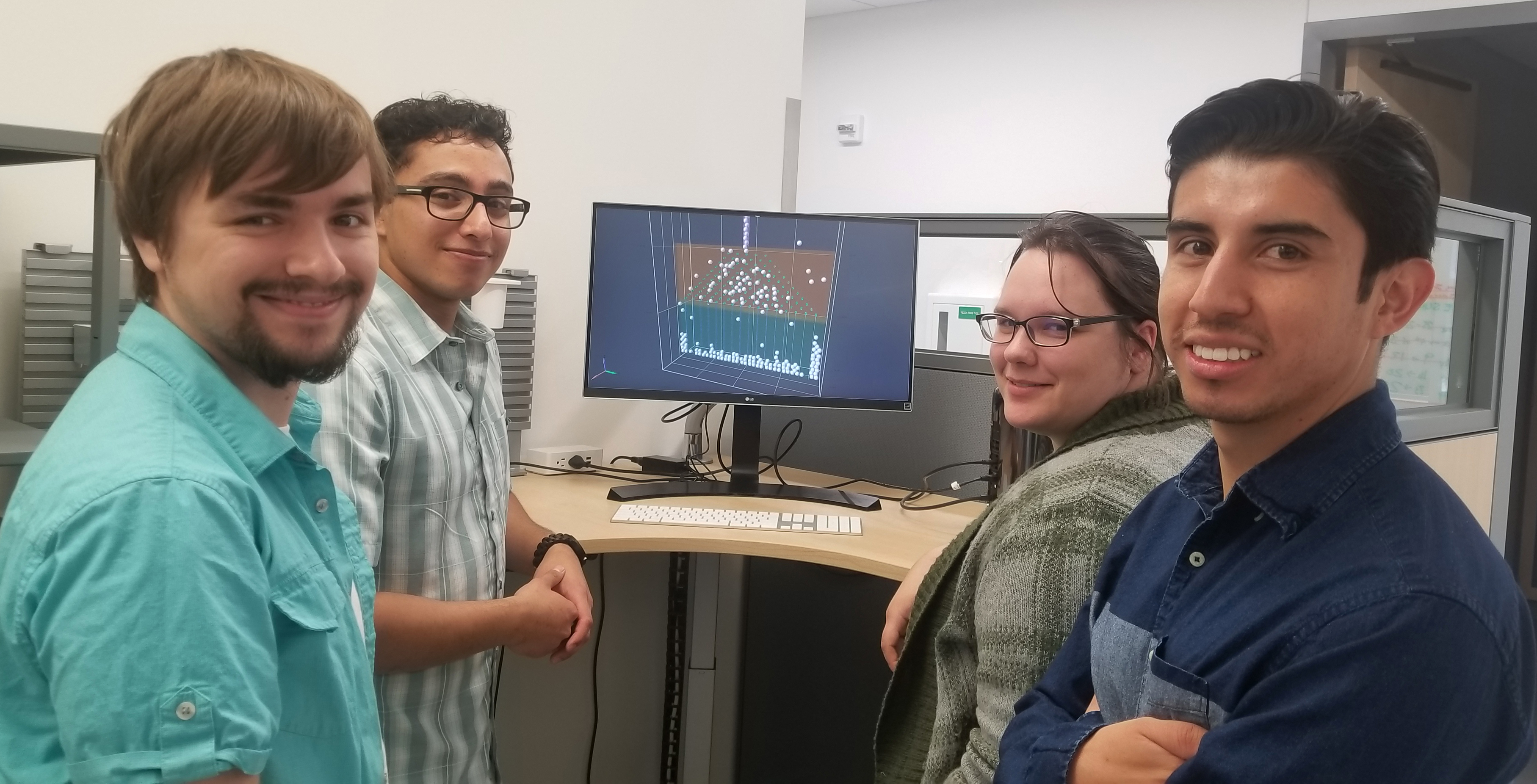
Coupi Interns from left Tristan Craddick, Luis Merques, Patricia Gerdes, and David Schweigert are working on moving the Coupi software closer toward commercialization. Photo by Amanda Byrd.
Every winter, landscapes undergo smoothing as snowfall accumulates to fill in or bridge depressions, which affect the amount of solar energy reflected from the snowy landscape. Predicting the snowfall pattern precisely can help scientists estimate the energy balance of the Earth and its role in climate change. Modeling snowfall accumulation is complex, as individual snowflakes bounce, roll, break, interlock, and stick to each other, and can best be simulated using a modeling method that accounts for the interaction of discrete particles with each other and the ground.
Four student interns are working on a computer program created by UAF spinoff company Coupi, Inc. to use the discrete element method (DEM) to successfully model and predict particle movement under different scenarios.
“To run many iterations under physical experiments can be expensive,” says student Patricia Gerdes, a senior in mechanical engineering.
Using DEM to model the iterations is quicker and easier: it can cut down the number of prototype iterations required in the field, and it changes the rate of repetition.
The interns not only are running the program simulations, they are actually writing the user manual, debugging, and testing the program.
The students – Luis Marquez (mechanical engineering graduate), Tristan Craddick (computer science graduate), and Gerdes – are writing a manual that can be used by anyone without previous knowledge of the program. David Schweigert (civil engineering senior) is learning to use the program by only following the manual. He gives feedback to the development team to make sure the manual is correct and understandable.
Schweigert is focused on marketing the consulting company and the computer product. His position in the team may be the most difficult. He is tasked with knowing everything about the program, everything about the company, and to be able to speak knowledgeably and with experience about the applications for the product.
Schweigert credits a former Coupi employee who is coaching him in cold calling, writing a marketing script, and how to answer any questions from potential vendors or clients with confidence.
“Listening to potential clients is a key component,” says Schweigert. “we’re not just selling the service, but being an interested consultant.”
The intern team consists of four hand-selected students from UAF. Their diverse backgrounds in mechanical engineering, civil engineering, and computer science were an important factor in the selection process.
Coupi co-founder Jerry Johnson says, “Every student has their strength, and there is strength in diversity.”
The reason many of the students applied for the position was to add engineering experience to their resume. In addition to the resume building, they are also getting real-life experience working for a private company with supportive and instructing mentors.
Johnson has an open door policy with his office sitting just feet away from the the students’ work area, which is all located in the Center ICE Innovation Hub. The students work individually on their assigned tasks, and speak freely about any issues they are having. Johnson can hear the questions and answers and is ready to jump in with solutions or other suggestions. This, in addition to the daily ‘stand-up’ meetings, which summarize each team member’s previous day’s accomplishments and struggles and outlines the current day’s work, creates a friendly, helpful, and productive work environment.
Johnson says that time is an important element; he and his team are developing a computer program that is easy to use and efficient. Efficiency is important.
As the interns move on from school and as Coupi nears successful commercialization of its product, these types of industry connections can result in job opportunities for the students while greatly benefitting the company. For now, though, the interns will work just two more weeks to continue to move the program forward and create a commercially ready product that could predict the movement of any particle across any surface at just about any speed.
July
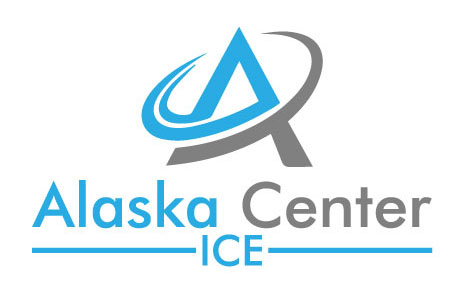 The Center ICE Seed Fund invests directly in people, technologies, and commercialization
efforts. It is designed to boost commercialization success, entrepreneurialism, and
innovation at the University of Alaska and throughout Alaska.
The Center ICE Seed Fund invests directly in people, technologies, and commercialization
efforts. It is designed to boost commercialization success, entrepreneurialism, and
innovation at the University of Alaska and throughout Alaska.
Proposals are welcome in three Center ICE Seed Fund categories: 1) Innovation at an Inflection Point, 2) Fostering the Entrepreneurial Mindset, and 3) Accelerating Commercialization.
Category 1 is open to anyone from the UA community as well as any Alaska-based entity. Categories 2 and 3 are available to support UA faculty, staff, and students, UA-owned IP, and members of Center ICE.
Depending on the category, Seed Funds are available up to $25,000 and $7,000.
Proposals may be submitted at any time. Please visit Center ICE for more information.
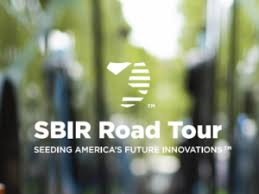 Registration is now open for the Fairbanks stop of the SBIR Road Tour on July 20, 2018!
Registration is now open for the Fairbanks stop of the SBIR Road Tour on July 20, 2018!
Through collaborative discussions and networking, the Road Tour is designed to teach you about SBIR opportunities and maximize your chance of being awarded one. Additionally, the day’s events will bring together researchers, entrepreneurs, and business leaders from around Alaska for strategizing and partnership.
The SBIR program is often called “America’s Largest Seed Fund,” as it’s a premier source of non-dilutive early stage funding. Federal agencies are eager to increase SBIR success in Alaska; come take advantage of this great opportunity. Program managers from the following agencies will be present: DARPA, USDA, DOD Missile Defense Agency, Navy, NIH, DHS, NASA, and NSF.
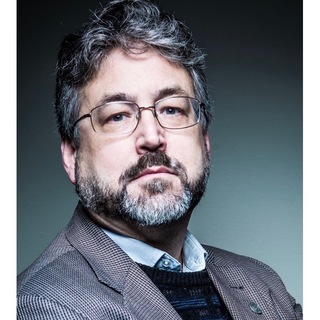 We are pleased to welcome Ky Holland to the OIPC team. Ky is active in the Alaska
startup community as a startup founder, investor, and event organizer.
We are pleased to welcome Ky Holland to the OIPC team. Ky is active in the Alaska
startup community as a startup founder, investor, and event organizer.
Prior to joining OIPC, Ky was contributing to UA technology commercialization efforts as an active member of the Intellectual Property Advisory Committee. Ky brings a depth of academic and business experience. He has been a UAA and APU faculty member, a founding board member of the Launch Alaska business accelerator, co-founder of the Alaska Accelerator Fund, executive director of the Alaska Process Industry Careers Consortium, and has worked over 30 years in industrial product design, operations, sales, and management.
A career in business, education, workforce development and investing has developed Ky’s focus on growing Alaska's future value-added economy and opportunities for Alaskans around the state.
Ky is starting with OIPC following a two-month Entrepreneur in Residence position in Serbia working with startup companies and organizations supporting Serbia's goal to be admitted into the European Union in 2025.
We welcome Ky to the OIPC team, and encourage you to introduce yourself to Ky when you see him or shoot him an email!
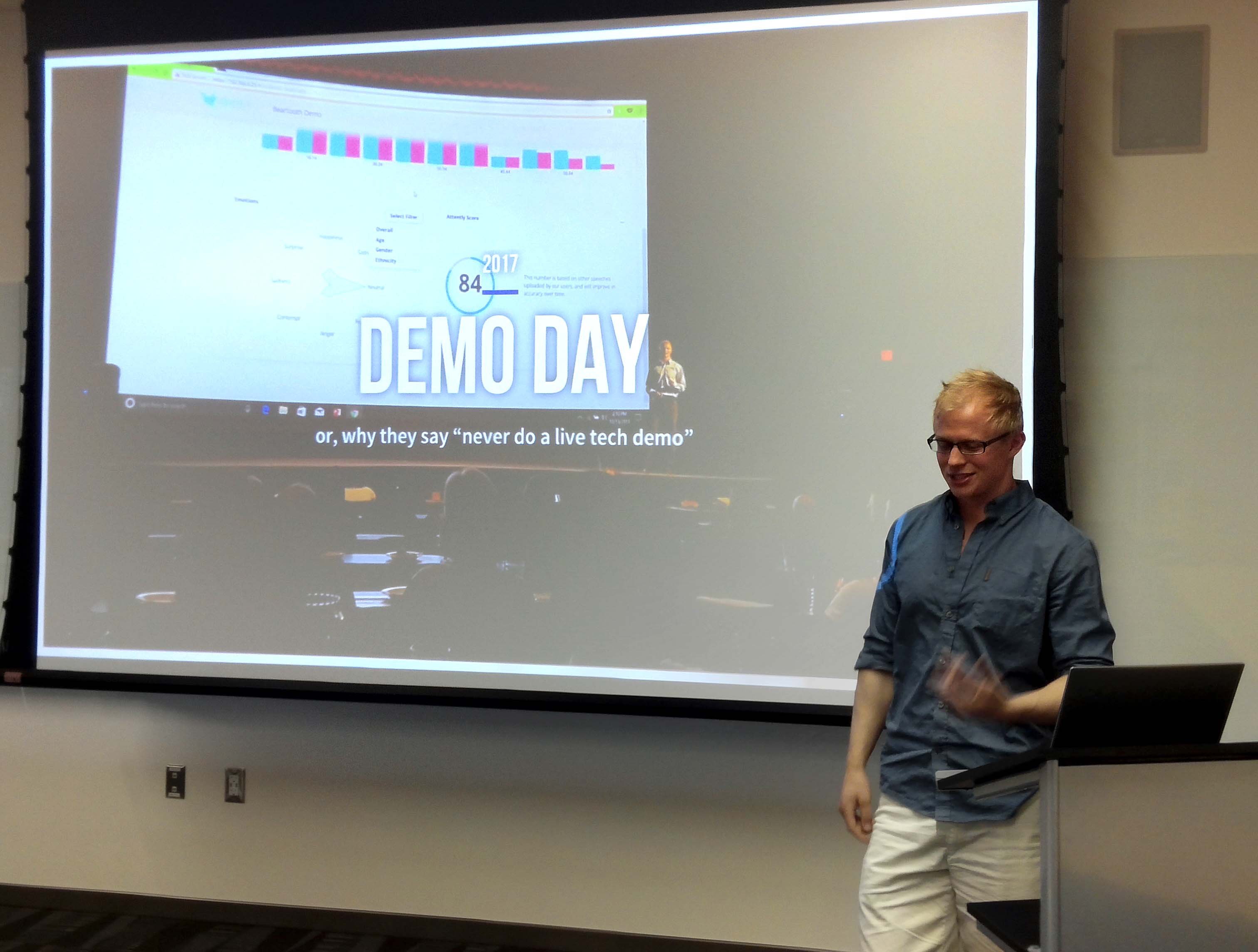 On May 24, Eric Solie was the guest speaker at the Innovation Initiative event. Students,
faculty and community members attended to hear Solie’s budding growth as an entrepreneur.
On May 24, Eric Solie was the guest speaker at the Innovation Initiative event. Students,
faculty and community members attended to hear Solie’s budding growth as an entrepreneur.
In 2016, Solie, CEO and co-founder Vincent Castro created a winning prototype during the Fairbanks Startup Weekend. Their winning idea, Attently, earned them a ticket to the Arctic Innovation Competition, which they won and they went on to win seed funding from Launch Alaska business accelerator.
According to Solie during an interview with Innovation Resource Consulting Group, “Attently is an analytics platform for determining the engagement of live audiences.” Read more of that interview.
Solie spoke during I2 of the importance of starting with a vision but embracing change. He stressed the importance of doing market research and being careful about ensuring it is not wrongly optimistic. He discussed the challenges that start-ups face in Alaska. The challenges include a small labor pool, limited funding opportunities, high travel costs and less opportunity for connection than outside states. He also talked about the benefits of being in Alaska - easy access to decision makers, less hiring competition, and more community support.
The monthly I2 events are taking a break for the summer and will return in September. For more information on I2 events, please contact the OIPC ambassadors, Robert “Trey” Coker rcoker@alaska.edu, Peter Webley pwwebley@alaska.edu, Rajive Ganguli rganguli@alaska.edu, and Eran Hood ewhood@alaska.edu.
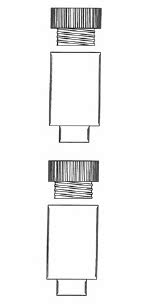 When you think of cryogenics, thoughts might go to sci-fi movies. However, the term
‘cryogenics’ simply refers to the long-term storage of biological material at ultra-low
temperatures, whether in ultra-cold freezers or the gold standard of cryopreservation,
liquid nitrogen.
When you think of cryogenics, thoughts might go to sci-fi movies. However, the term
‘cryogenics’ simply refers to the long-term storage of biological material at ultra-low
temperatures, whether in ultra-cold freezers or the gold standard of cryopreservation,
liquid nitrogen.
Natural history museums, biomedical labs, and a wide range of research facilities all employ cryopreservation, and samples are typically stored in small, screw-top tubes (cryovials) that can withstand extreme temperatures. For years, the industry standard has been a 2-milliliter cryovial, but advances in biotechnology now allow scientists to use much smaller amounts of frozen samples, and traditional 2-ml cryovials have become excessive and take up valuable, expensive-to-maintain space in cryogenic facilities.
UAF researchers Link Olson, Kyndall Hildebrandt, and Aren Gunderson have designed a new model half the volume of traditional cryovials that allows two to be stored as a single interlocking unit in the same space taken up by a single older model. This has the added benefit of not requiring new (and expensive) boxes and racks used to organize cryovials within larger spaces. The immediate goal was to maximize the amount of frozen tissues archived in the UA Museum of the North’s world-class Genomic Resources facility.
The broader goal is to bring this benefit to research facilities around the world. A patent, U.S. Design Patent D820467, for this technology was issued on June 12, 2018.
June
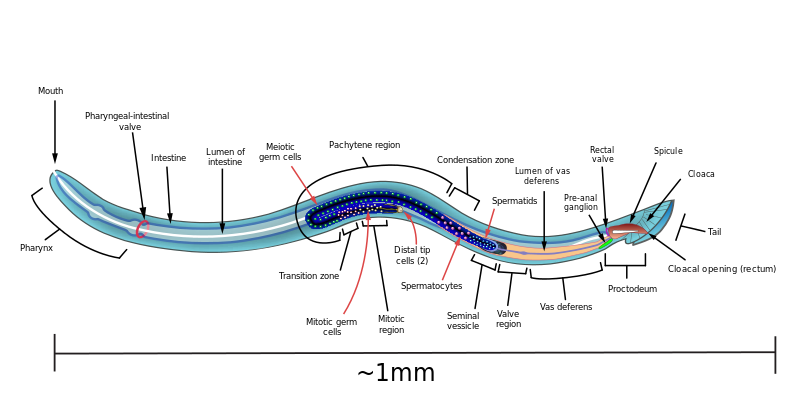 UAF’s nematode sieve is moving closer to market release through a collaboration with
an industry partner. The simple device solves a common problem in labs that use nematodes
as a model organism. The solution would reduce the time and resources spent on lab
experiments, thereby speeding up the pace of science in those labs.
UAF’s nematode sieve is moving closer to market release through a collaboration with
an industry partner. The simple device solves a common problem in labs that use nematodes
as a model organism. The solution would reduce the time and resources spent on lab
experiments, thereby speeding up the pace of science in those labs.
Lab tests related to human diseases and drugs require clinical trials performed on a model organism before testing on humans. A popular model organism is the Caenorhabditis elegans, a nematode that shares certain genes and molecular pathways with humans; that can model the effects on an entire organism including active digestive, reproductive, endocrine, sensory and neuromuscular systems; and, with a mere two-week lifespan, can model an entire life cycle in a short period of time.
A major hurdle to research on nematodes, which are 1mm when fully grown, is separating them based on life stage.
Currently, labs sort nematodes (a) manually with a pick or pipette, which is very time consuming and does not lend itself to large scale sorting; (b) using a chemical, but that can alter the development of the embryo, or (c) with a machine that is prohibitively expensive.
Barbara Taylor and members of her lab needed a more workable solution. Necessity being the mother of invention, they developed their "nematode sieve," which is the subject of a pending patent application.
The Taylor lab's elegant solution to a common problem caught the eye of industry. Currently, the technology is licensed to NemaMetrix Inc., which is further developing and testing the device with plans to launch a product soon.
"We're keen to see our simple and effective solution adopted by C. elegans labs and benefitting research far beyond Alaska," said Taylor.
 The Small Business Innovation Research (SBIR) and Small Business Technology Transfer (STTR) program awards have helped U.S. innovators advance new technologies and have
contributed to the creation of thousands of jobs.
The Small Business Innovation Research (SBIR) and Small Business Technology Transfer (STTR) program awards have helped U.S. innovators advance new technologies and have
contributed to the creation of thousands of jobs.
The SBIR Road Tour offers more information on the different SBIR programs, how to win an SBIR award, and there'll be tales of SBIR experience from veteran researchers and business owners. Program managers from many federal agencies will be available for one-on-one meetings.
Mark your calendar, stay tuned for more details, and contact us with any questions.
We’re happy to announce OIPC’s newest ambassador: Eran Hood, a Professor of Environmental
Science at the University of Alaska Southeast (UAS).
Eran’s research interests are centered around hydrology and biogeochemistry. His recent projects include an interdisciplinary effort to understand the downstream effects of glacier change and developing novel techniques to study carbon cycling in aquatic ecosystems.
Eran says he looks forward to extending OIPC resources to UAS faculty and students and spurring participation through initiatives such as the Invent Alaska competition.
One of Eran’s goals as an ambassador is to recruit UAS faculty in the Humanities and Social Sciences to engage with OIPC as well as UAF student and faculty so they can collaborate on developing products and technologies.
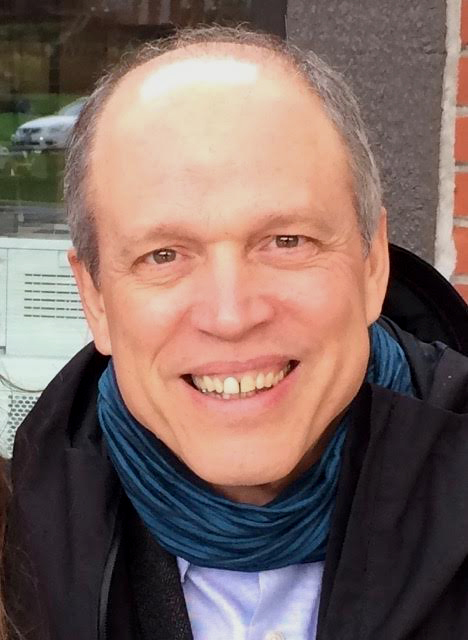 Scott Bell has been a key player of entrepreneurialism and innovation at UAF.
Scott Bell has been a key player of entrepreneurialism and innovation at UAF.
Bell is the President of Nanook Tech Ventures, a for-profit company created in 2013 to facilitate the startup of local companies. Instead of requiring an upfront licensing fee, NTV licenses UAF technologies in exchange for equity in the new company.
Bell is also a member of UAF's Intellectual Property Advisory Committee and serves as Associate Vice Chancellor for Facilities Services.
In March 2018, Bell was recognized by Chancellor White with an award for Innovation and Entrepreneurialism at UAF.
 This spring, OIPC's Mark Billingsley graduated from the Fairbanks Chamber of Commerce's Leadership Fairbanks course.
This spring, OIPC's Mark Billingsley graduated from the Fairbanks Chamber of Commerce's Leadership Fairbanks course.
This nine-month course brings together emerging and established leaders to develop skills through exposure to challenging ideas, insights from local leaders, lively discussion, and personal reflection. As OIPC supports local commerce through licensing and startup companies, an important ally is the Fairbanks Chamber of Commerce, a longtime partner of UAF. From this course, Mark gained valuable relationships and new ideas to advance OIPC's mission.
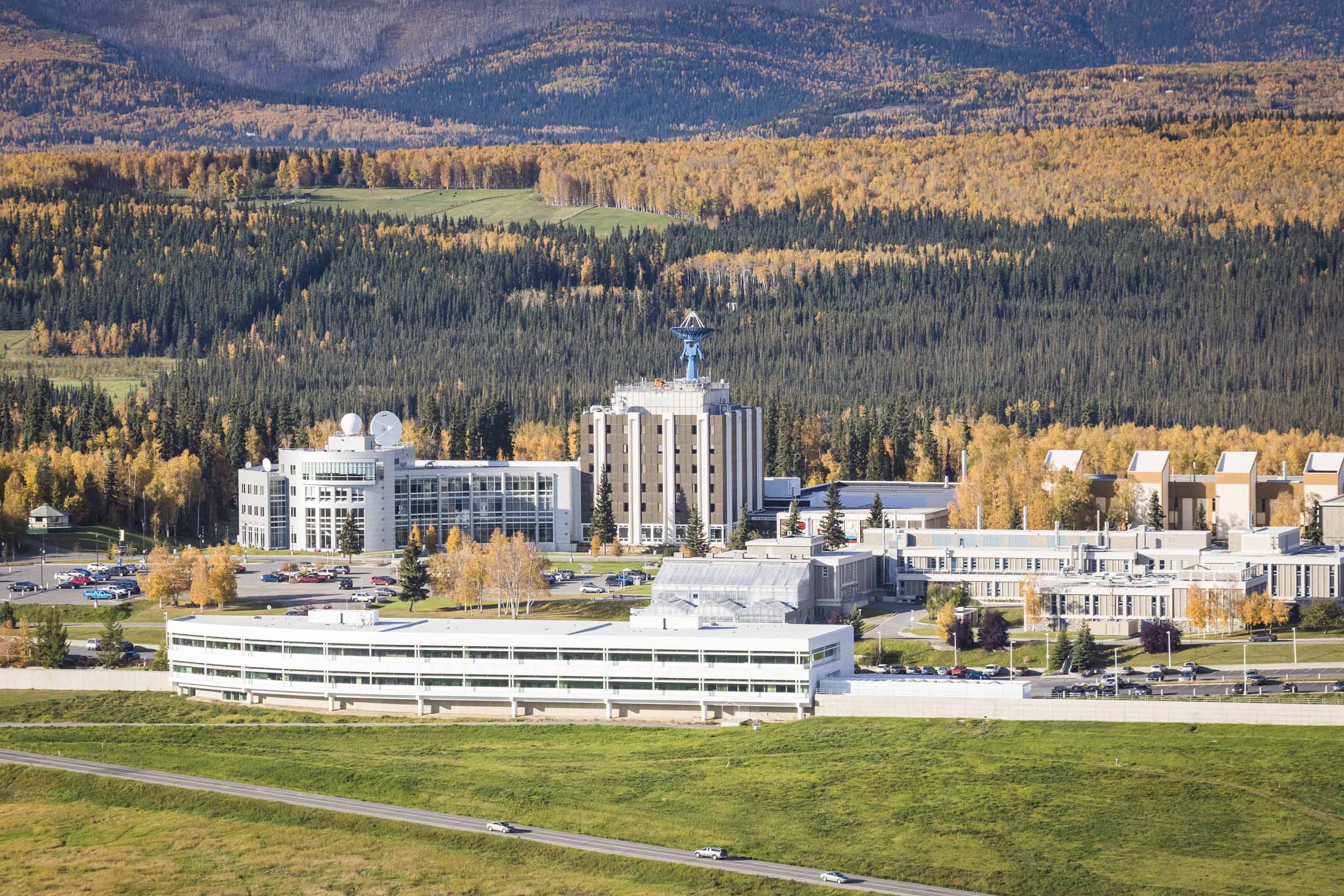
UAF’s Geophysical Institute. Photo by JR Ancheta.
UAF's Geophysical Institute recently updated its unit criteria to include additional criteria that focused around intellectual property and its development, disclosures, and revenue generation thus further making innovation and commercialization an integral part of its success moving forward.
The GI recently included further measures under research performance as well as recognition of revenue generated from IP to provide those faculty pursuing IP commercialization with an avenue to include this work alongside their other academic pursuits.
Notably, GI faculty formed UAF's first spin-off company - V-ADAPT, Inc., developed from UAF GI IP while GI researchers have also produced many of UAF’s patented technologies. The GI is the second organization at UAF to include additional criteria and language in its unit criteria to recognize the importance of innovation to the University's success following on from UAF's Institute of Northern Engineering
This year's Invent Alaska competition demonstrated the growing culture of innovation at UAF and UAS. Entries came from a variety of fields including computer science, engineering, geophysics, and marine science. Students, in particular, shined this year, with impressive entries earning top honors.
We appreciate the time that all of the UAF and UAS innovators spent developing technological advancements and innovative solutions to real-world problems. Their contributions are important to growing the innovative spirit in Alaska and to diversifying Alaska's economy. We look forward to continuing to work with the inventors on these technologies and to help with their future endeavors.
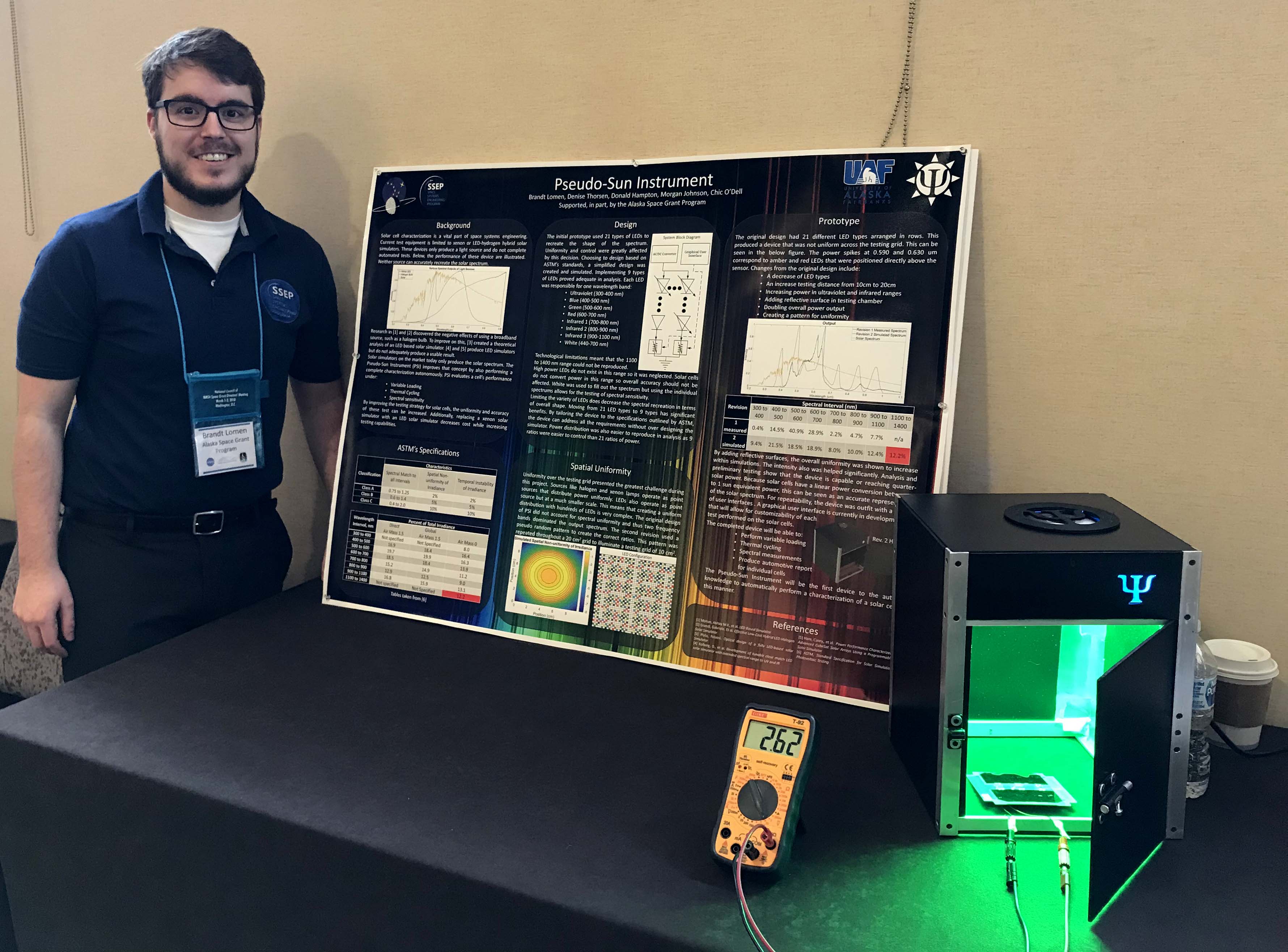 Brandt Lomen, a student in Denise Thorsen's Space Systems Engineering Lab, won the
Grand Prize with his Pseudo-Sun Instrument.
Brandt Lomen, a student in Denise Thorsen's Space Systems Engineering Lab, won the
Grand Prize with his Pseudo-Sun Instrument.
The Psuedo-Sun Instrument was developed as a way to imitate the Sun and test solar cells developed in Denise Thorsen's Space Systems Engineering Lab. Lomen used a suite of different colored LED lights that match the Sun's spectrum that can be controlled for spectrum and amplitude. This allows the device to mimic what the Sun would look like on Earth, in space, or on Mars.
Heidi Pearson, a Professor of Marine Biology, won the Best UAS Innovation with the cetacean-borne video camera and integrated sensor system, or C-VISS.
C-VISS has the ability to record dolphin behaviors and other life events from the dolphin's perspective in their natural habitat underwater. The C-VISS provides new insights into the conservation and rehabilitation status, sociology, and welfare of the species.
Best Early-Stage Invention: Aaron Rouse, Student
Check-In Check-Out System
Greatest Commercial Potential: Lee Santoro, Affiliate Professor
Arctic Automatic
The 2019 Invent Alaska Competition is open. Visit Invent Alaska for more information.
 Registration is live for Launch Alaska's biggest event of the year - Demo Day, happening June
28th from 5-8pm at 49th State Brewing Company in Anchorage.
Registration is live for Launch Alaska's biggest event of the year - Demo Day, happening June
28th from 5-8pm at 49th State Brewing Company in Anchorage.
Demo Day 2018 will celebrate the end of the third Launch Alaska accelerator program and showcase this year's portfolio companies.
From software enabled energy platforms to microgrids and tilt up wind turbines, this year's cohort companies are paving the way for Alaska's resource revolution.
The evening will include company pitches from our four current cohort companies as well as two alumni. There will be time to network and meet the portfolio of companies after the program.
Doors open at 5 pm, the show starts at 5:30 pm. Appetizers and drinks will be served.
For more information contact Alyse Daunis at alyse@launchalaska.com.
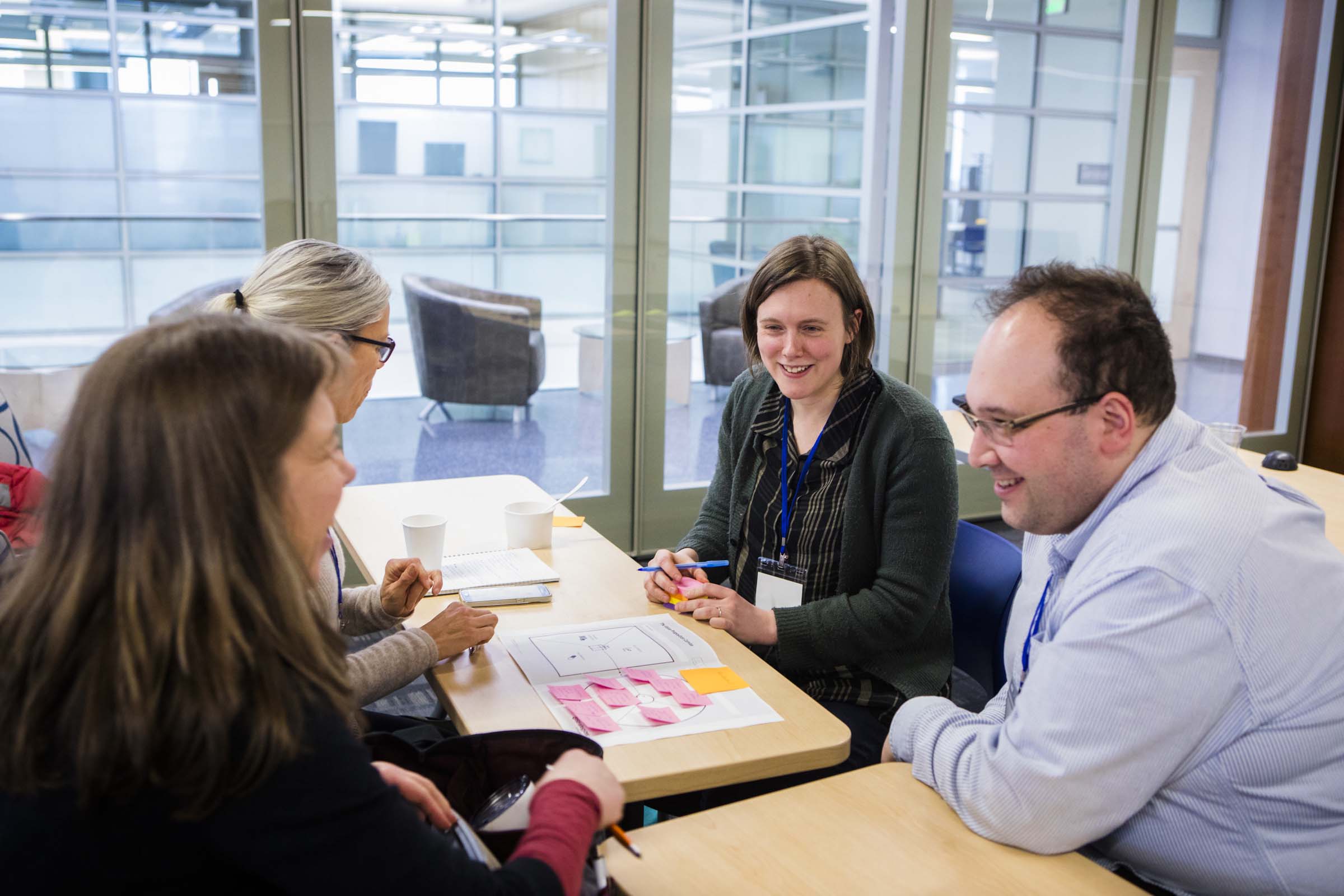
Photo by JR Ancheta
Are you interested in building your resume while working with an exciting and entrepreneurial University start-up company?
We are looking for motivated students from all backgrounds (business, engineering, science, liberal arts) with at least a 3.0 GPA to intern at UAF’s new Center ICE.
May
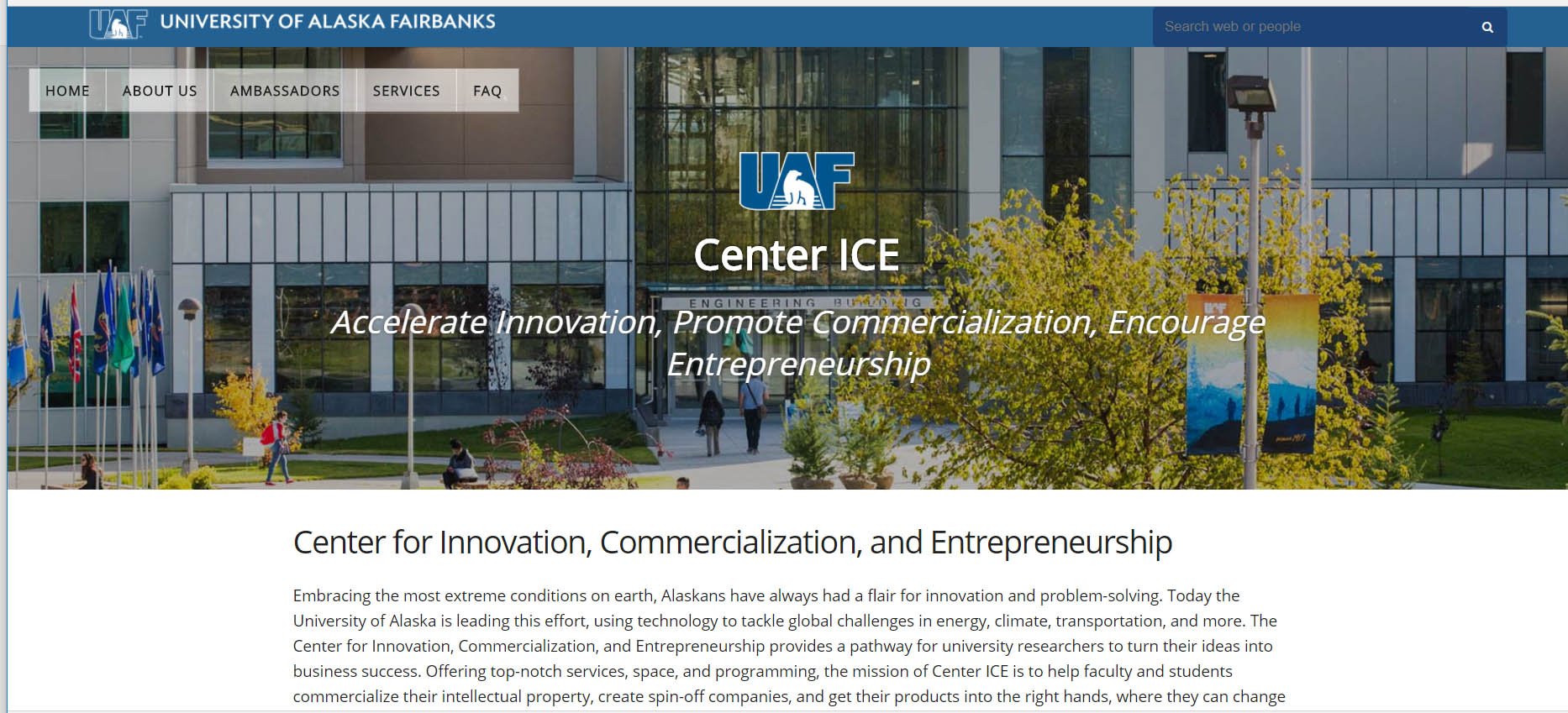 Center ICE is pleased to announce it is now accepting application for private office,
cubicle and lab space leases in the new Engineering Learning Innovation Facility.
Center ICE offers a tiered lease structure to help meet the needs of UA start-up companies
and entrepreneurs. Leases included access to many services and programming such as
the opportunity to apply for seed funds and intern support. We are excited to offer
this opportunity to developers of UA owned IP.
Center ICE is pleased to announce it is now accepting application for private office,
cubicle and lab space leases in the new Engineering Learning Innovation Facility.
Center ICE offers a tiered lease structure to help meet the needs of UA start-up companies
and entrepreneurs. Leases included access to many services and programming such as
the opportunity to apply for seed funds and intern support. We are excited to offer
this opportunity to developers of UA owned IP.
Visit the new Center ICE Website. Or contact us at CenterICE@alaska.edu.
The Center for Innovation, Commercialization, and Entrepreneurship provides a pathway for university researchers to turn their ideas into business success. Offering services, space, and programming, Center ICE helps faculty and students commercialize their intellectual property, create spin-off companies, and get their products into the right hands, where they can change the world.
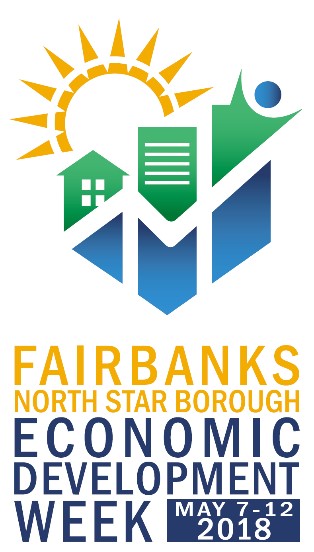 Stop by Center ICE on May 10th from 4:00 to 6:00 p.m. to check out the space, meet the staff, and learn more about
available services and programming. This Open House event is part of Economic Development
Week in Alaska, as proclaimed by Governor Walker. Other scheduled events include
an Informative Session on the China Trade Mission and the Visitor Industry Walk for
Charity. The goal of Economic Development Week is to increase awareness for local
initiatives that create jobs, advance career development opportunities and increase
the quality of life.
Stop by Center ICE on May 10th from 4:00 to 6:00 p.m. to check out the space, meet the staff, and learn more about
available services and programming. This Open House event is part of Economic Development
Week in Alaska, as proclaimed by Governor Walker. Other scheduled events include
an Informative Session on the China Trade Mission and the Visitor Industry Walk for
Charity. The goal of Economic Development Week is to increase awareness for local
initiatives that create jobs, advance career development opportunities and increase
the quality of life.
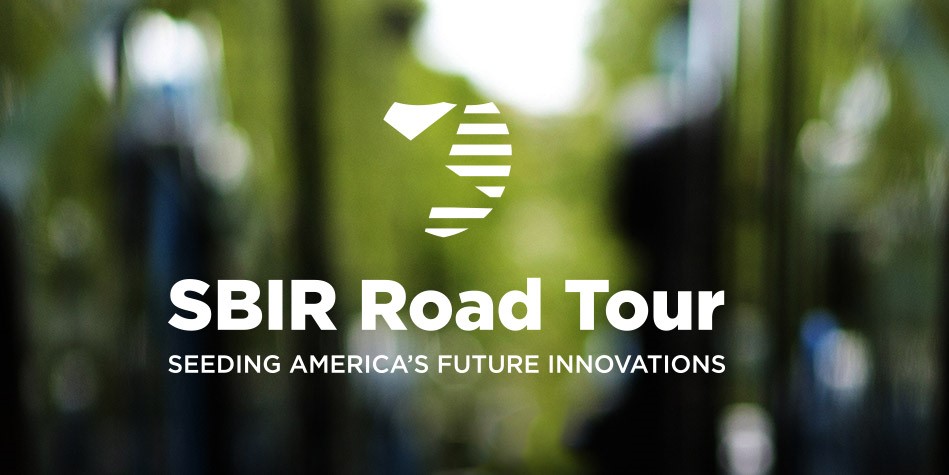 The Small Business Innovation Research (SBIR) and Small Business Technology Transfer (STTR) program awards have helped U.S. innovators advance new technologies and have
contributed to the creation of thousands of jobs.
The Small Business Innovation Research (SBIR) and Small Business Technology Transfer (STTR) program awards have helped U.S. innovators advance new technologies and have
contributed to the creation of thousands of jobs.
The SBIR Road Tour offers more information on the different SBIR programs, how to win an SBIR award, and there'll be tales of SBIR experience from veteran researchers and business owners. Program managers from many federal agencies will be available for one-on-one meetings.
Mark your calendar, stay tuned for more details, and contact us with any questions.
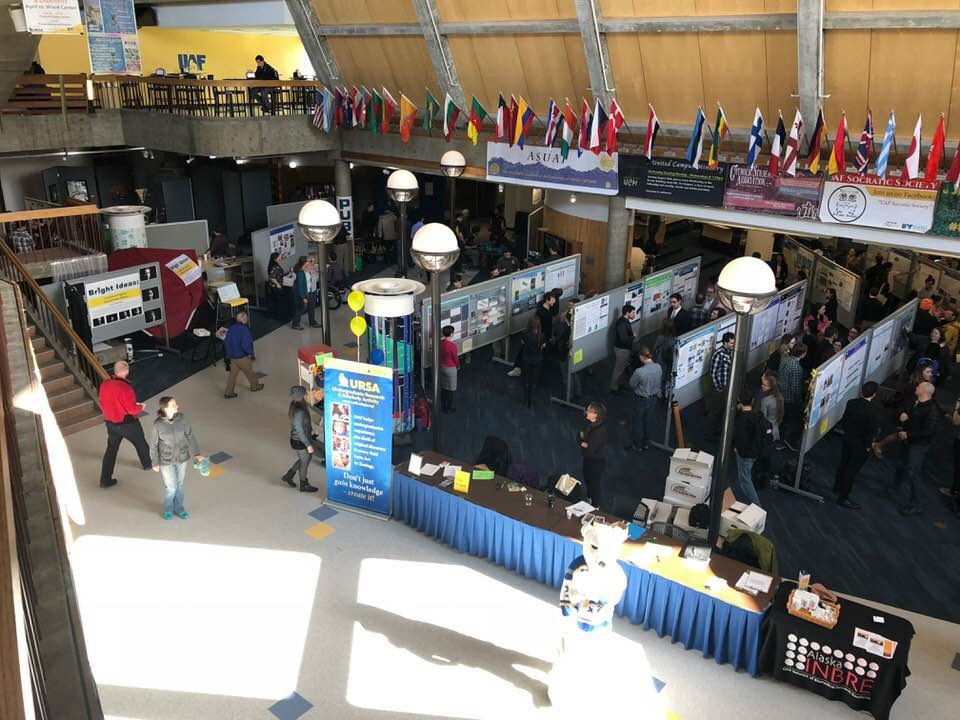
URSA Day in the Wood Center. Photo by Peter Webley.
OIPC Ambassadors visit URSA day and present to UAF Student Group “AIM”
OIPC Ambassador Peter Webley recently attended UAF’s Undergraduate Research and Scholarly Activity day to learn more about current undergraduate research at UAF and to offer assistance to students with ideas that have commercial potential.
Dr. Webley discovered several the projects with commercial potential. He helped direct them toward resources within the University – such as the Invent Alaska competition and OIPC’s services – as well as outside – such as the Small Business Development Center and Launch Alaska.
Webley also recently presented to UAF’s Active and Innovative Minds student group and their Faculty Mentor, Dr. Ping Lan. Webley discussed the upcoming events in the Entrepreneurial calendar.
These are some examples of how OIPC Ambassadors are reaching out to UAF students and connecting them to the innovation and entrepreneurial pipeline.
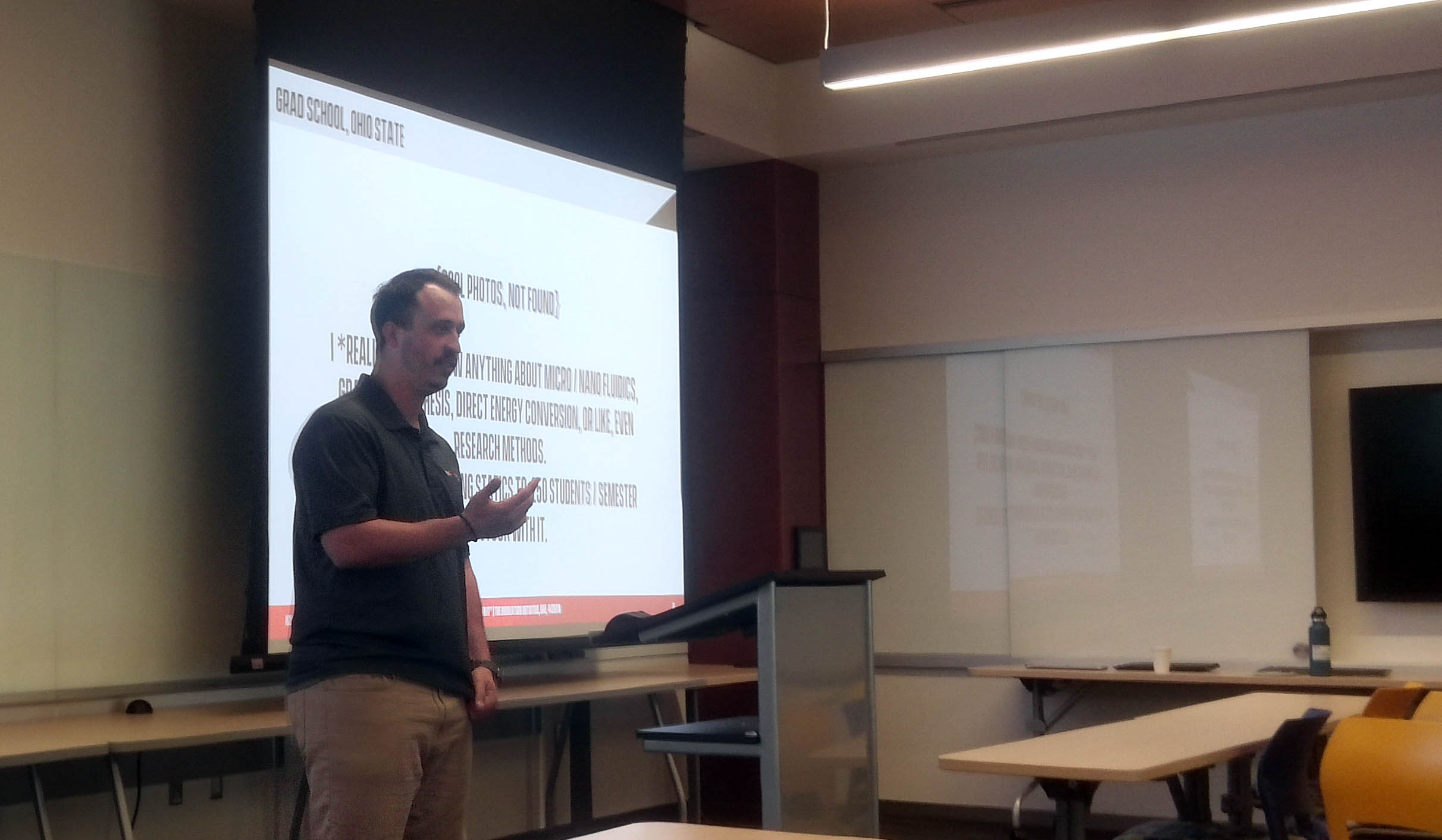
Ben Kellie Presents at the April I2 event. Photo by Rajive Ganguli.
UAF mechanical engineering alumnus Ben Kellie has touched the sky and successfully landed back in Alaska. At the April 26th Innovation Initiative, or "I2," event, Kellie described his journey through graduate school, the exciting projects he worked on at Space-X, and his return to Alaska as owner and operated of K2 Dronotics, a successful drone company based in Anchorage.
Attendees were captured by Kellie's tales of success and failure, which communicated his central theme: persistence pays off. Kellie recounted multiple projects he worked on at Space-X and the experiences that led him to pursue K2 Dronotics with his brother Nick Kellie, a fellow UAF mechanical engineering graduate.
The crowd included many students who were inspired to hear what's possible in their near-future. Kellie encouraged tenacity and reminded them that "you are going to be awful at first, but that's fine." Kellie also contended that "big crazy things are not done by content people!"
I2 events are a chance to interact with successful innovators and entrepreneurs as well as mingle and network with a crowd of like-minded people from diverse backgrounds.
This video provides an inside view of the Lean Launch Workshop, held in March, 2018, which brought together entrepreneurs and innovators to learn the Lean Startup methodology.
 The Invent Alaska competition closed on April 27. As the academic year wrapped up,
researchers finished up yearlong projects, and students polished off their class capstone
design projects. We had many exciting entries this year! Stay tuned to hear the
winning entries. In the meantime, here’s a sampling of some of the innovative new
technologies developed this year at UAF and UAS:
The Invent Alaska competition closed on April 27. As the academic year wrapped up,
researchers finished up yearlong projects, and students polished off their class capstone
design projects. We had many exciting entries this year! Stay tuned to hear the
winning entries. In the meantime, here’s a sampling of some of the innovative new
technologies developed this year at UAF and UAS:
- An ice radar system that monitors the location and movement of sea ice,
- A LED solar energy simulator for testing solar panels, and
- An on-board device for tracking small dolphins and capturing video.

Photo by JR Ancheta.
Are you interested in building your resume while working with an exciting and entrepreneurial University start-up company?
We are looking for motivated students from all backgrounds (business, engineering, science, liberal arts) with at least a 3.0 GPA to intern at UAF’s new Center ICE.
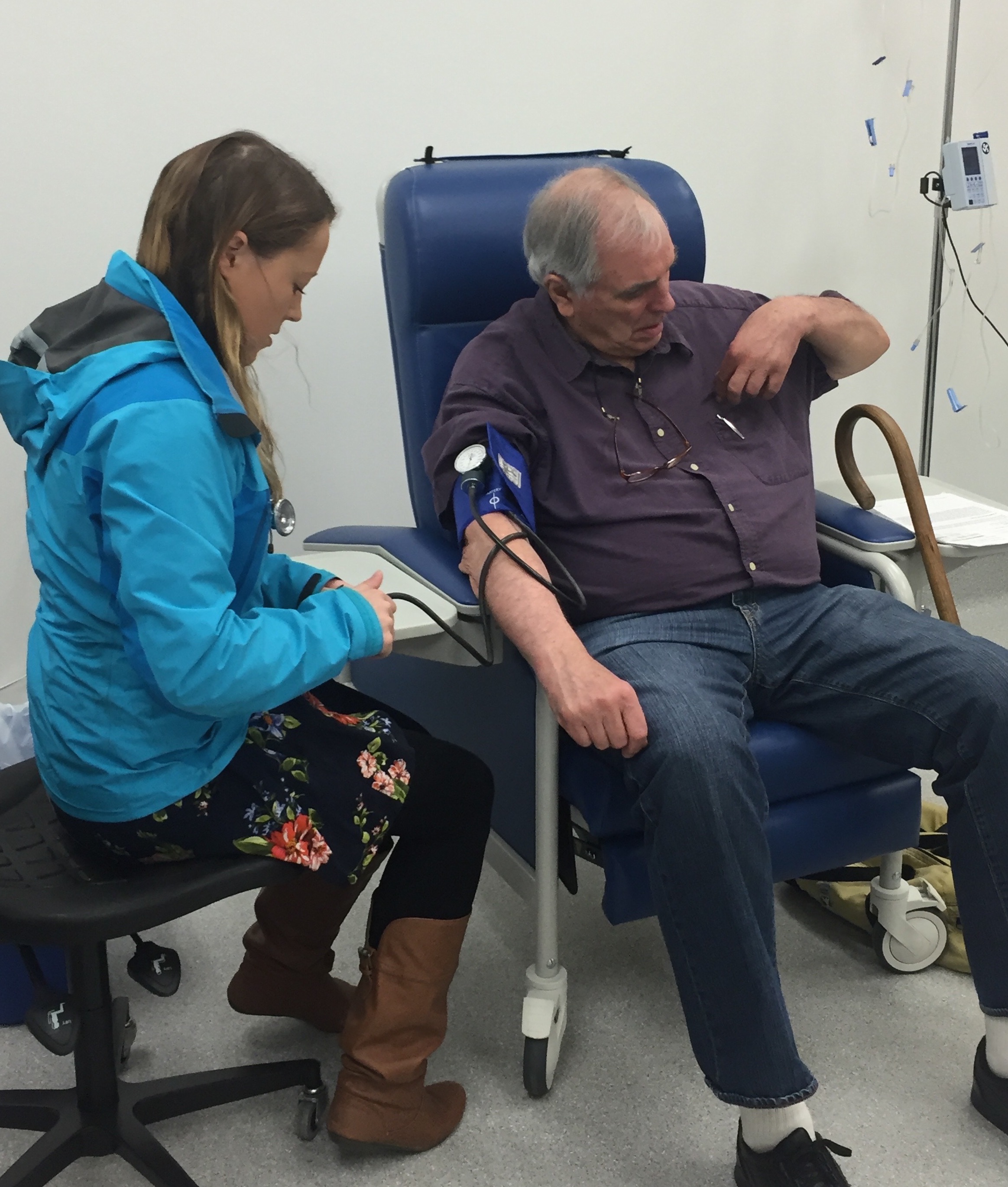
Kristin Scholten, UAF BS graduate in biology, is the Clinical Coordinator for the double blind study.
Alaskans have had limited access to groundbreaking clinical trials. This is starting to change in several ways: improved access to an expanding clinical network, increased clinician involvement in research, and innovations in food science that may improve health.
In conjunction with the University of Washington Institute for Translational Health Sciences, UAF’s Dr. Robert Coker contributed to the establishment of a Northwest Participant Clinical Interactions Network that will help align scientific exploration with patient populations in rural and urban areas of the Pacific Northwest. For the first time in interior Alaska, the NW PCI will now allow local clinicians to “plug in” to existing clinical trials that interest them and their patients.
Dr. Coker also has focused his own research on local issues with nationwide significance. For example, the increased number and proportion of individuals over the age of 65 will triple in Alaska over the next ten years. He asserts that it will be absolutely essential for these individuals to maintain their functional independence and quality of life. In order to help them do just that, Dr. Coker founded Essential Blends, LLC and worked with UAF to develop nutritional formulations that preserve skeletal muscle in aging, even with unanticipated hospitalization.
Recently, he opened up recruitment for a clinical trial that will compare his meal replacement to a commercially available version in a double blind fashion. Community interest has been absolutely incredible with nearly 100 people expressing their desire to participate in the study. Once completed, Dr. Coker will be able to determine the potential benefits linked to muscle preservation, physical function, cognition, gut health and liver lipid. Stay tuned for the community dissemination of this interesting study.
 The AAP pilot program helps eligible small R&D businesses and individuals submit a
competitive Phase I SBIR/STTR application to NCI, NINDS, and/or NHLBI. Solicitation
is currently open and will close on May 4th, 2018.
The AAP pilot program helps eligible small R&D businesses and individuals submit a
competitive Phase I SBIR/STTR application to NCI, NINDS, and/or NHLBI. Solicitation
is currently open and will close on May 4th, 2018.
This round is for preparation of an application for the September 5th, 2018 NIH SBIR/STTR due date. These services are available at no cost to participants. For more information on the AAP and application, visit Dawnbreaker's website .
April
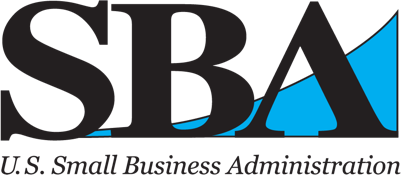 The U.S. Small Business Administration's Emerging Leaders class is being offered for
the first time in Fairbanks.
The U.S. Small Business Administration's Emerging Leaders class is being offered for
the first time in Fairbanks.
This is a nationally recognized Executive Leadership program for small business owners interested in growing their businesses.
The 13 week course offers a curriculum that includes in-depth training in finances, marketing, procurement, human resources and organizational management as related to small business.
This SBA sponsored program is free to the participants and they walk away with a three year growth plan that helps them take their businesses to the next level. It has been compared to MBA programs offered through educational institutions and is highly regarded throughout the US. To register or find out more, visit Interise SB administration.
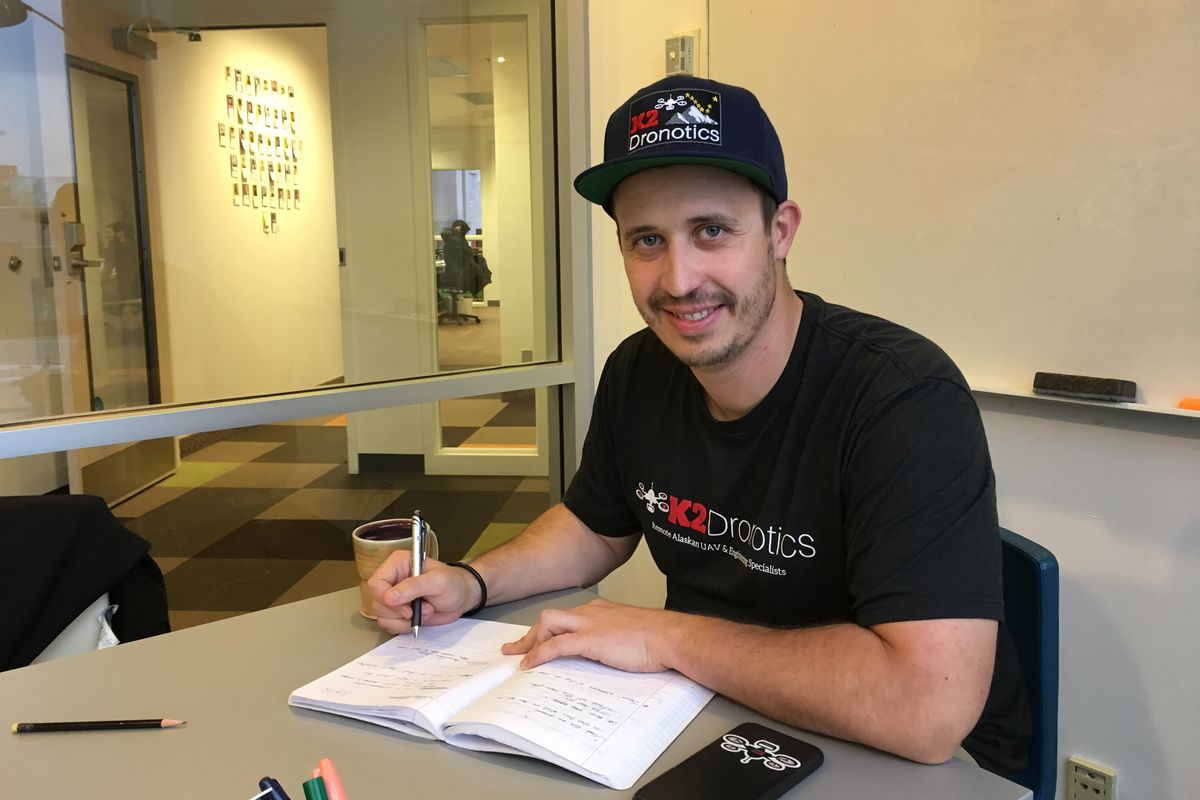
Ben Kellie works at the Boardroom in downtown Anchorage, January 5, 2018. Kellie returned to Alaska from work launching rockets for SpaceX to begin a company serving rural Alaska with drones. (Charles Wohlforth / ADN)
The next I2 event will be held on Thursday, April 26th, at 4:30 p.m. on the 4th floor of ELIF (the new engineering building) in the Design Theater. Ben Kellie will describe his journey from UAF mechanical engineering graduate to SpaceX rocket designer, to CEO and Chief Pilot of K2 Dronotics.
K2D was founded by Ben and Nick Kellie, both born-and-raised Alaskans who grew up flying across the state delivering groceries, building supplies, and fuel to rural villages. They understand that working in remote Alaska takes more than just showing up - it takes careful planning to do the job right the first time when you have limited tool access, no cell service, and a million other changing variables. Kellie's short presentation will be followed by a social mixer and informal question-and-answer session. For more details on I2 events, contact OIPC Ambassadors Peter Webley (pwwebley@alaska.edu), Rajive Ganguli (rganguli@alaska.edu), and Robert Coker (rcoker@alaska.edu).
 The Invent Alaska Competition, hosted by the Office of Intellectual Property and Commercialization,
is open to all UAF and UAS students, staff and faculty.
The Invent Alaska Competition, hosted by the Office of Intellectual Property and Commercialization,
is open to all UAF and UAS students, staff and faculty.
Submit your invention disclosures NOW through April 27, 2018.
Do you have a technology that you would like to commercialize? Enter the Invent Alaska Competition for your chance to win!
The grand prize winner will receive $7,500 and assistance with protecting and commercializing their innovation.
For more details, visit Invent Alaska or contact OIPC at 474-2605.

A screenshot of the simulator
It takes anywhere from 10 to 50+ years for a promising mineral deposit to become an operating mine in the United States. It takes a lot of capital, hard work and highly trained professionals to make it all happen. In this very long process, the only step where revenue is generated is a few hours long, in the mineral processing plant "mill". Therefore, it is important to design and operate the mill efficiently to extract the most value in a short duration. Yet, it is in this critical step of the process where formal training opportunities are lacking.
When the US Department of Labor announced a competitive opportunity for training grants in 2014, the UAF Mineral Industry Research Laboratory engaged mining companies to determine their training needs. It is not surprising that the industry deemed mill operator training a critical area of need. Among other things, the MIRL-industry grant partnership proposed developing a training program for mining mill operators. The training will be a 16-credit mining mill operator occupational endorsement to be offered through UAF Community and Technical College.
No formal training program currently exists anywhere in the United States for mill operators.
It was also proposed that a dynamic mill simulator be developed to accompany the academic training. The purpose of the simulator is to help operators understand the complex relationships between different parts of the processing plant. No such simulator exists anywhere in the world.
Both training products are now a reality thanks to an $8M grant from industry partners Coeur Kensington mine, Hecla Greens Creek mine, Kinross Fort Knox mine, and Sumitomo Pogo mine, who played a key role in both products. Teck Red Dog mine recently joined the grant efforts. Some of these mines were the first test beds for the training mill simulator.
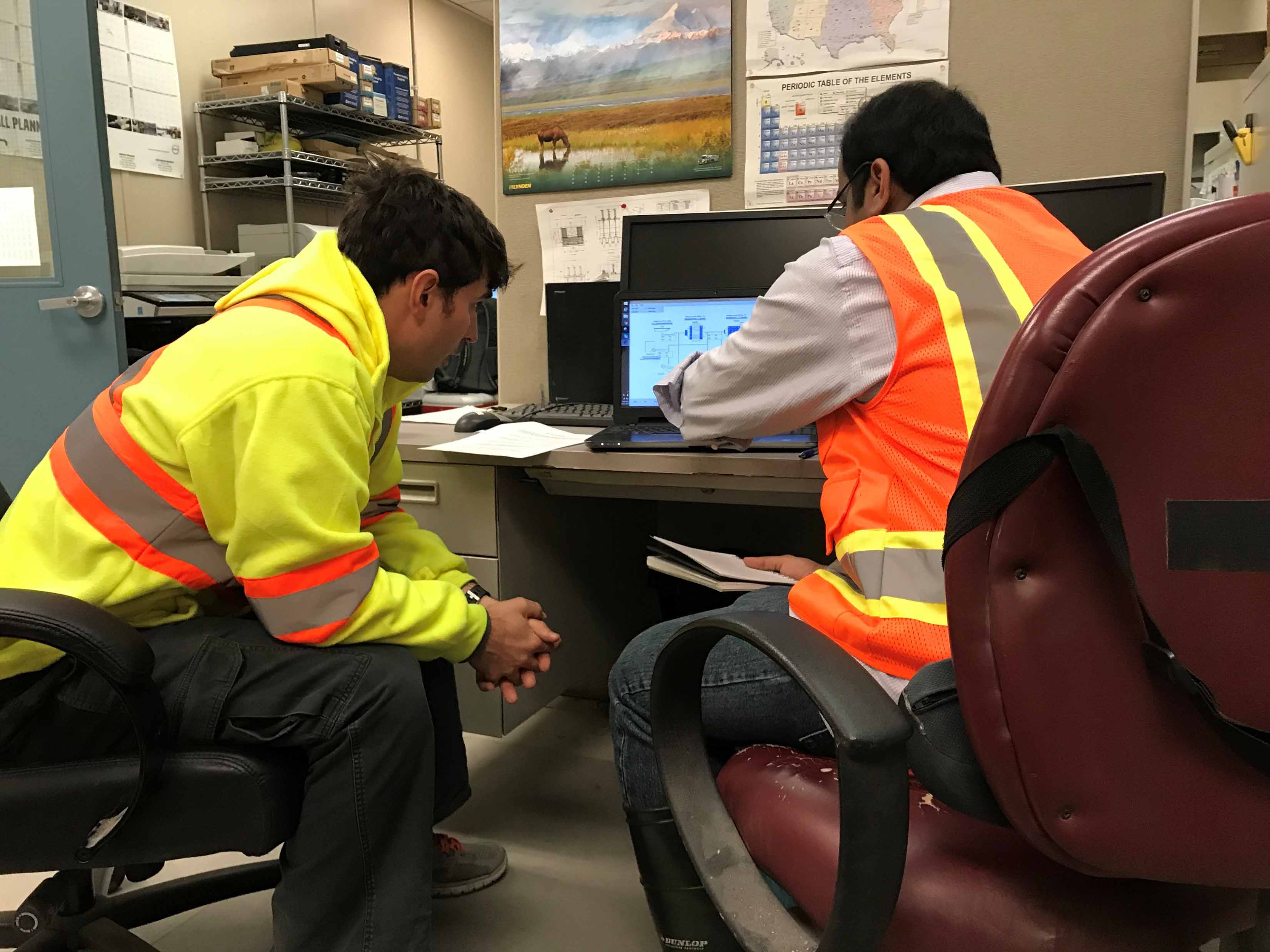
Simulator being tested at Pogo mine. Photo by Aibyek Khamkhash.
The simulator can be customized to any processing scenario. Operators can adjust different parameters to see impact on the overall process. In real life, they cannot adjust parameters without real consequences. Therefore, the simulator will help them test their understanding of the process they operate. This is the major reason why mining companies hope to incorporate the simulator into their in-house training program.
The simulator, developed in partnership with UAF Office of Information Technology, was tested at Pogo, Fort Knox and Red Dog mines in the last few months.
The purpose of the testing was to get feedback from mill operators before completing development. The simulator, now complete under the grant, can be downloaded for free (a condition of federal funding) from UAF Mineral Industry Research Laboratory.
Development of the simulator will, however, continue with non-federal funding. The enhanced version can be commercialized by UAF. The goal of the continued development is to make it very attractive to the industry.
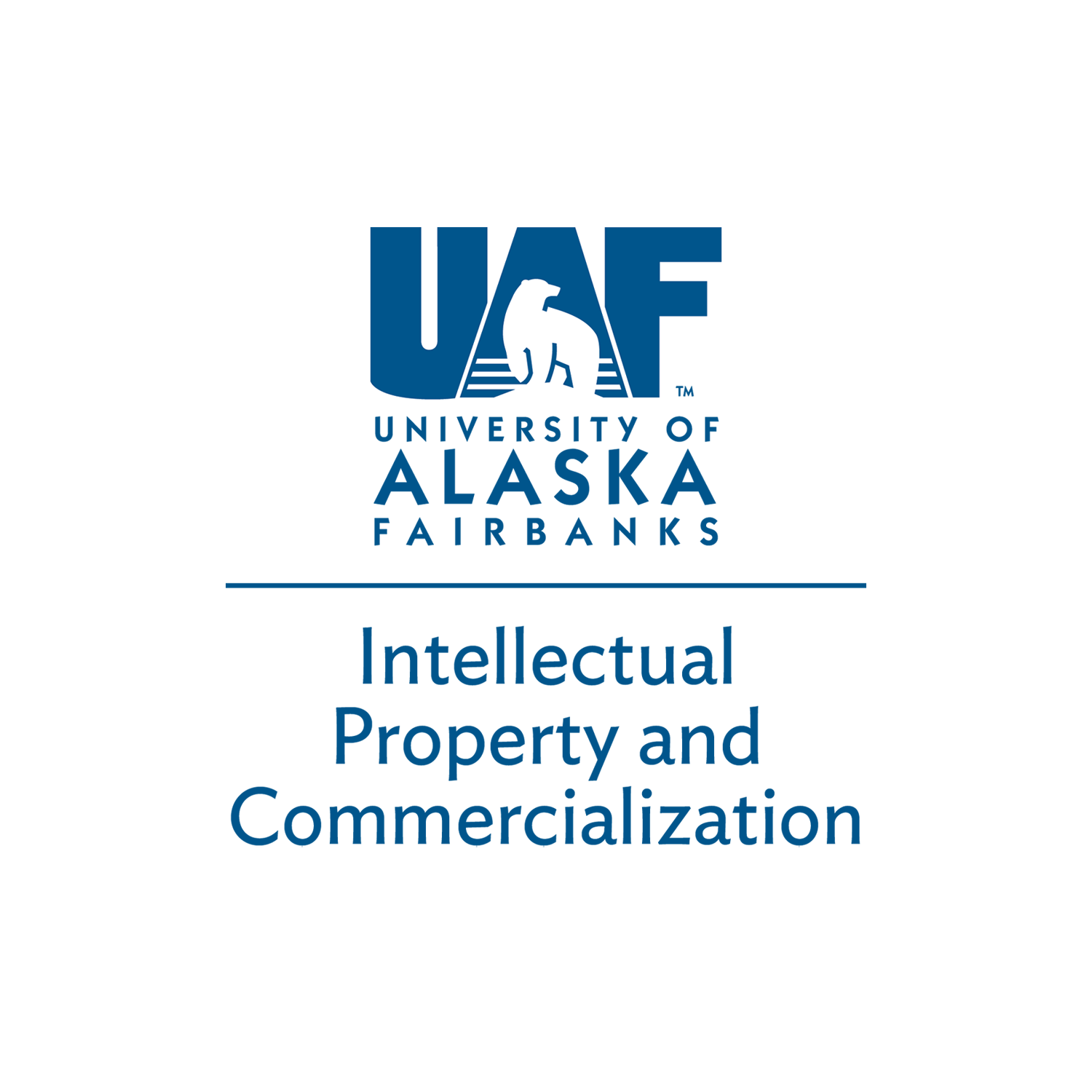 Did you know that OIPC executes all non-disclosure agreements (NDAs) between UAF and
external agencies, companies, and individuals?
Did you know that OIPC executes all non-disclosure agreements (NDAs) between UAF and
external agencies, companies, and individuals?
Sometimes this amounts to nearly 100 NDAs in a year. Each NDA represents a relationship with an external entity. UAF's relationships are critical to UAF's reputation and future success. OIPC takes its role with regard to NDAs seriously and works hard on each and every one.
NDAs can be very important to protecting the value of intellectual property and often are a prerequisite to collaborating. If you have any questions about whether you might need a NDA, please don't hesitate to contact us.
When you need a NDA, email us at uaf-oipc@alaska.edu. We'll send you, or the external entity, a copy of our template so that we can start working toward getting the NDA executed, which often takes less than a week.
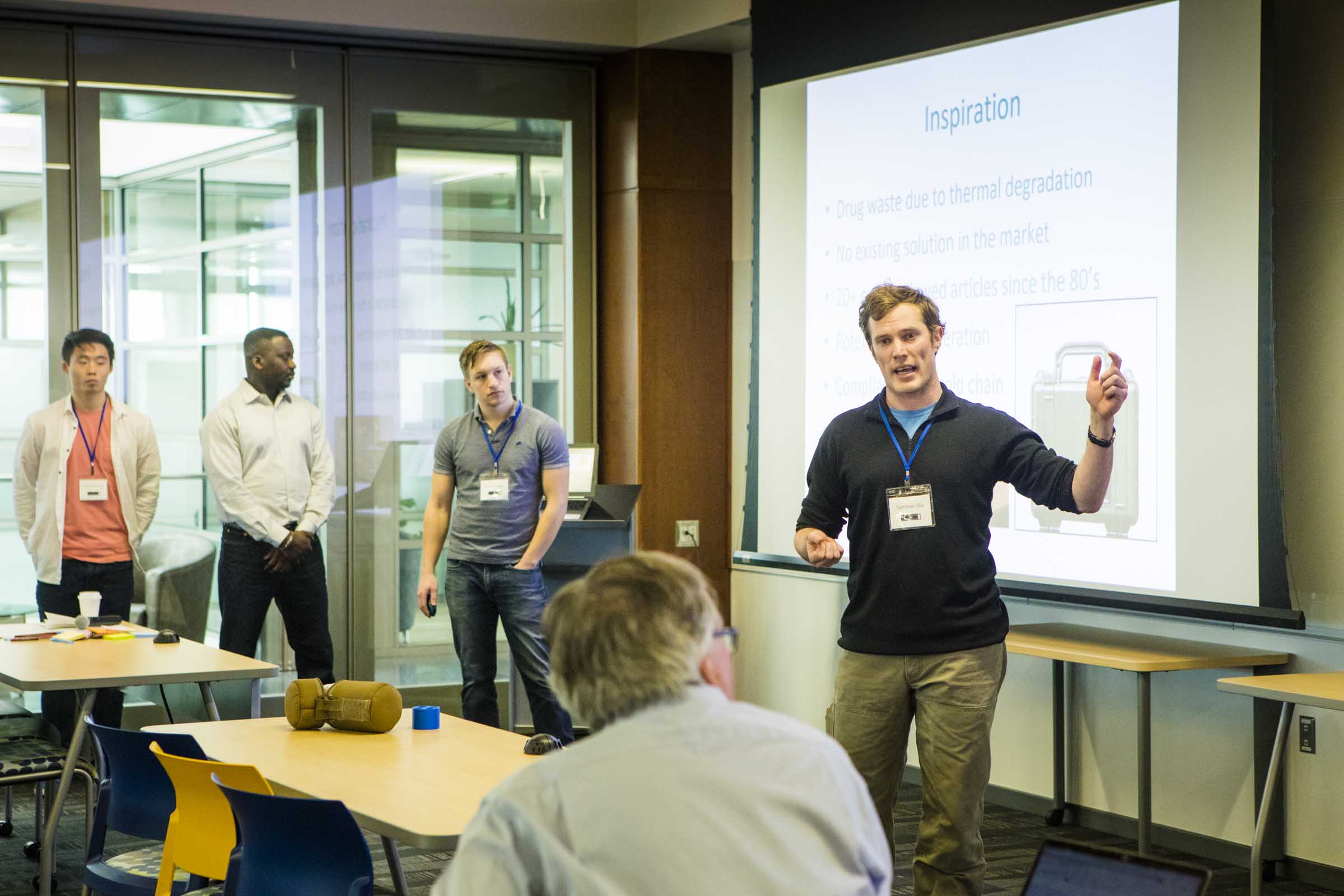
Lean Launch Workshop participant Sammer Dia presents on his team's work. Photo by JR Anchetta/UAF.
OIPC hosted a workshop on the Lean Startup Method, a scientific approach for developing products and businesses.
Over three days, 26 UA faculty, students, and staff experienced the pressures and demands of an early-stage startup as they worked in teams to test the viability of an idea, product, or technology.
Instructors for the workshop included Steve Weinstein, an entrepreneur who has taught the Lean Startup Method at UC Berkley and Stanford, and Nigel Sharp, UA's Global Entrepreneur in Residence.
The instructors were supported by seasoned entrepreneurs who mentored teams individually, both during the workshop and in the preceding weeks as teams made first contact with customers.
The Lean Startup Method is the curriculum used by the National Science Foundation to prepare its Innovation Corps ("I-Corps") teams to make a commercial impact with NSF-funded research. OIPC Ambassadors Robert Coker and Peter Webley are working closely with Steve Weinstein to offer a semester-long Lean LaunchPad course in the Spring of 2019.
This course was sponsored by the Office of Naval Research and co-hosted by BMNT.
The SBIR Road Tour coming to Fairbanks on July 20.
The Small Business Innovation Research (SBIR) and Small Business Technology Transfer (STTR) program awards have helped U.S. innovators advance new technologies and have contributed to the creation of thousands of jobs.
The SBIR Road Tour offers more information on the different SBIR programs, how to win an SBIR award, and there'll be tales of SBIR experience from veteran researchers and business owners. Program managers from many federal agencies will be available for one-on-one meetings.
Mark your calendar, stay tuned for more details, and contact us with any questions.
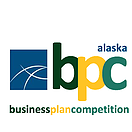 Since 1999, the University of Alaska Anchorage and Alaska Pacific University have
worked with local corporate sponsors and the business, investor, and startup community
to provide entrepreneurs with the opportunity to present their startup to the public
and validate their business ideas.
Since 1999, the University of Alaska Anchorage and Alaska Pacific University have
worked with local corporate sponsors and the business, investor, and startup community
to provide entrepreneurs with the opportunity to present their startup to the public
and validate their business ideas.
The deadline for submitting business plans is Monday, April 9. The public pitch event is Wednesday, April 25, beginning at 5:00 pm at the 49th State Brewery in Anchorage.
For more information on the Alaska Business Plan Competition, visit Alaska Business Plan Competition
.March
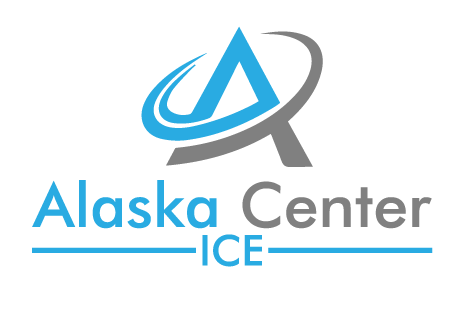 The University of Alaska Fairbanks is pleased to announce the formation of the Center
for Innovation, Commercialization, and Entrepreneurship (Center ICE) - an innovation
hub designed to accelerate innovation, promote economic diversification, and encourage
entrepreneurialism in the University of Alaska system.
The University of Alaska Fairbanks is pleased to announce the formation of the Center
for Innovation, Commercialization, and Entrepreneurship (Center ICE) - an innovation
hub designed to accelerate innovation, promote economic diversification, and encourage
entrepreneurialism in the University of Alaska system.
Center ICE will provide the services, space, and programming needed to increase the university’s output by commercializing intellectual property, creating spinoff companies, and helping entrepreneurs feed into Alaska’s startup ecosystem. Stay tuned for more details, or contact us anytime at uaf-oipc@alaska.edu.
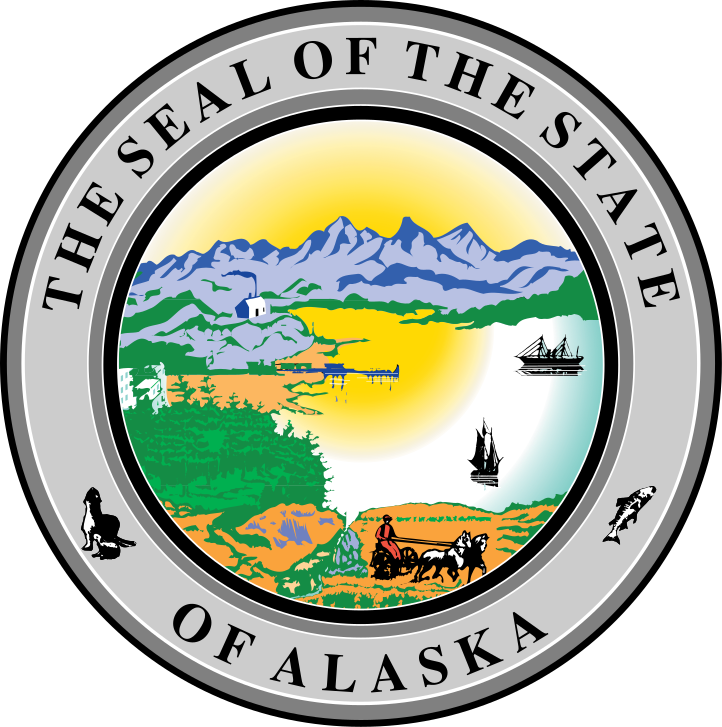 On February 13, the Alaska Senate unanimously approved a resolution proclaiming 2019 as the Alaska Year of Innovation.
On February 13, the Alaska Senate unanimously approved a resolution proclaiming 2019 as the Alaska Year of Innovation.
A report produced by the National Bureau of Research states that net job creation is driven by startups. The number is as high as three million jobs annually.
In response to Alaska’s current fiscal climate, the State legislature has created the Alaska Innovation Caucus. The caucus will research and discuss policy options including:
- Encourage growth of globally competitive startups and greater access to venture capital
- Simplify, and help startups navigate, regulatory frameworks within the state
- Support development of startup mentorship networks
- Support entrepreneurship in schools and universities, including encouraging technology transfer and commercialization
Collaboration between universities, regional and statewide economic development groups, investors, businesses and entrepreneurs has helped build an active innovation community in Alaska.
SCR10, sponsored by senators Mia Costello, Shelly Hughes, and Tom Begich, will be considered by the Alaska House of Representatives.
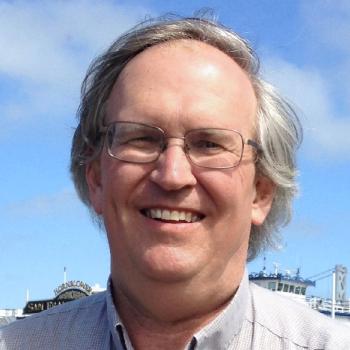 The intense three-day workshop designed to teach participants how to take university
research and other great ideas from concept to commercialization starts on March 12.
The intense three-day workshop designed to teach participants how to take university
research and other great ideas from concept to commercialization starts on March 12.
This workshop, based on the Lean Startup methodology for developing products and companies, is led by Steve Weinstein who teaches a similar course at the University of California Berkeley and Stanford. To learn more, visit leanlaunch18.com.
This course is sponsored through the Office of Naval Research and co-hosted by BMNT.
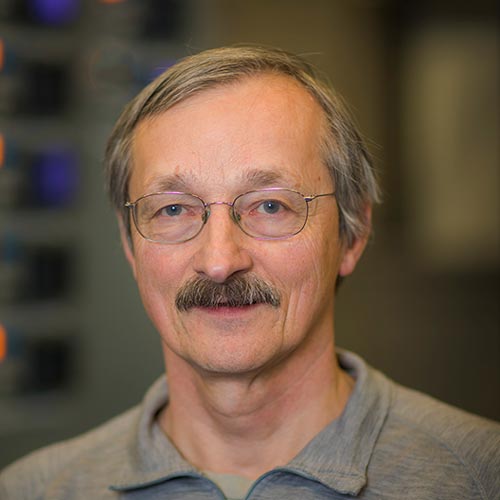 The next I2 event will be held on Monday, March 22nd, at 4:30 p.m. on the 4th floor of ELIF (the new engineering building) in the BP Design Theater. Dr. Jerry
Johnson will describe his experience developing a technology through his university
research and then starting his own company to commercialize the technology.
The next I2 event will be held on Monday, March 22nd, at 4:30 p.m. on the 4th floor of ELIF (the new engineering building) in the BP Design Theater. Dr. Jerry
Johnson will describe his experience developing a technology through his university
research and then starting his own company to commercialize the technology.
Dr. Johnson is the president of Coupi Inc. as well as a Research Professor and the Senior Research Advisor to the Alaska Hydrokinetic Energy Research Center.
Coupi, Inc. is a consulting and software company that specializes in developing physics based discrete element method models of granular materials, and their interaction with fluids, solids, and engineered equipment and infrastructure on Earth and in space for CAE applications.
Johnson’s short presentation will be followed by a social mixer and informal question-and-answer session.
For more details on I2 events, contact OIPC Ambassadors Peter Webley (pwwebley@alaska.edu), Rajive Ganguli (rganguli@alaska.edu), and Robert Coker (rcoker@alaska.edu).
 The Invent Alaska Competition, hosted by the Office of Intellectual Property and Commercialization,
is open to all UAF and UAS students, staff and faculty.
The Invent Alaska Competition, hosted by the Office of Intellectual Property and Commercialization,
is open to all UAF and UAS students, staff and faculty.
Submit your invention disclosures NOW through April 27, 2018.
Do you have a technology that you would like to commercialize? Enter the Invent Alaska Competition for your chance to win!
The grand prize winner will receive $7,500 and assistance with protecting and commercializing their innovation. Separate categories exist for (1) innovations with the greatest commercial potential, (2) best early-stage ideas, (3) student submissions, and (4) UAS submissions.
For more details, visit Invent Alaska or contact OIPC at 474-2605.
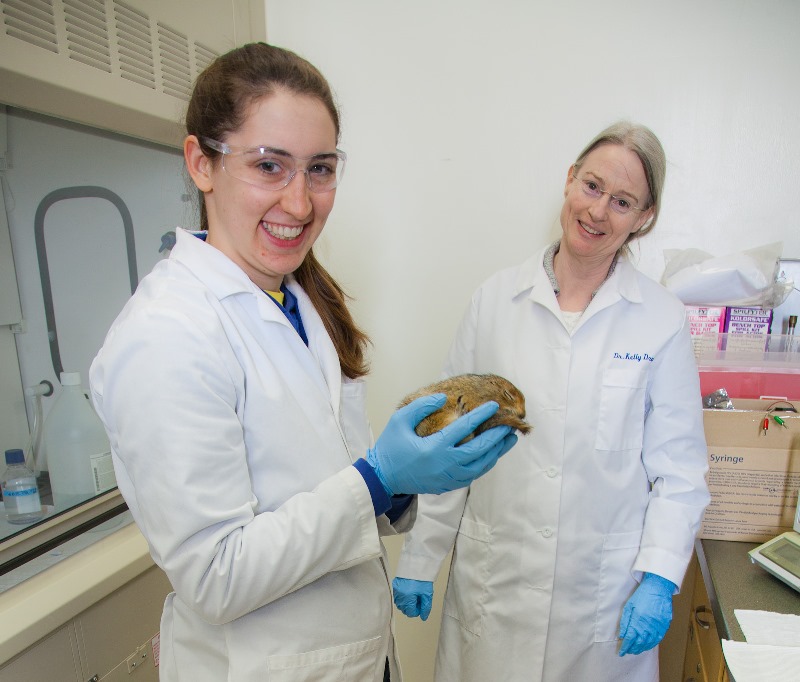
Kelly Drew and a student work with a hibernating arctic ground squirrel. Photo by Todd Paris/UAF.
Kelly Drew is a neuropharamacologist. That is someone who develops and studies the effects of drugs on the brain - more specifically in the case of Dr. Drew, the effects of drugs on consciousness.
Drew was also one of three Fairbanksans recently inducted into the Alaska Innovators Hall of Fame (PDF).
Drew was inducted for her work on developing drugs to simulate the natural hibernation state of arctic ground squirrels, which use their body’s natural chemistry to slow down the brain and body functions so much that they exist in a state of lowered awareness. Their body temperatures drop to near freezing yet they incur no damage to brain tissue.
Watch a video about Kelly’s work here!
Drew discovered receptors that regulate the onset of hibernation and now she’s building on that knowledge to pursue a medical solution for human victims of stroke, cardiac arrest, and spinal-cord injury. She is developing compositions and methods to induce these people into a hibernation-like state to ward off negative effects of the injury and minimize permanent damage until proper and complete medical service is available. This innovation will be highly valuable among, for example, rural and remote communities.
Drew’s breakthrough findings are the basis for a she started small business - Be Cool Pharmaceuticals LLC. The small business allowed her access to more funding sources including the Small Business Innovation Research and Small Business Technology Transfer grants. Through these grants, Drew was able to extend her work with the drugs to include the use in humans to reduce body temperature and induce hibernation without shivering.
In addition to working on minimizing brain injury, Drew is working with a space exploration company. Space Works is interested in learning how to send astronauts into space for extended periods of time keeping the astronauts in a hibernation state to assist in the length of travel.
Drew is using a similar drug technology to reduce opioid-related constipation. An agonist drug would reduce the pain, and the antagonist drug would reduce the side effects associated with the drug.
Drew says her experience with commercializing her technologies has been made easier by working with OIPC, however her biggest hurdle has been the patenting process. Drew says her extensive experience writing manuscripts for journals came into play when she realized that writing a technology description for a patent application is more like writing a paper, rather than writing in an intimidating legal language.
For now, while the human hibernation research is still in the design phase, the drug combinations that the Drew lab have found may be used in stroke patient transportation in the future. Be Cool Pharmaceuticals LLC will continue to work with ground squirrels to fully understand the mechanisms they use to stay cool without shivering.
In 2018 Drew was inducted to the Innovators Hall of Fame alongside former Fairbanksan Eric Swanson (PDF), Fairbanks Peony pioneer Patricia Holloway (PDF), and the Traditional Halibut Hook (PDF).
 The Invent Alaska Competition, hosted by the Office of Intellectual Property and Commercialization,
is open to all UAF and UAS students, staff and faculty.
The Invent Alaska Competition, hosted by the Office of Intellectual Property and Commercialization,
is open to all UAF and UAS students, staff and faculty.
Submit your invention disclosures NOW through April 27, 2018.
Do you have a technology that you would like to commercialize? Enter the Invent Alaska Competition for your chance to win!
The grand prize winner will receive $7,500 and assistance with protecting and commercializing their innovation. Separate categories exist for (1) innovations with the greatest commercial potential, (2) best early-stage ideas, (3) student submissions, and (4) UAS submissions.
For more details, visit Invent Alaska or contact OIPC at 474-2605.
 VOLT49 is a clean energy sprint based on the Google Ventures' Sprint process. VOLT49
teams will create solutions to clean energy challenges. VOLT49 is looking for tinkerers,
energy advocates, scientists, engineers, and marketers.
VOLT49 is a clean energy sprint based on the Google Ventures' Sprint process. VOLT49
teams will create solutions to clean energy challenges. VOLT49 is looking for tinkerers,
energy advocates, scientists, engineers, and marketers.
Building on the highly successful Ocean Technology Innovation Sprint in October 2017, Volt49 is inviting Alaskan tinkerers, energy advocates, scientists, engineers and marketers who are passionate about renewable energy and innovation to apply for admission into the first cohort.
More program information is available at volt49.com.
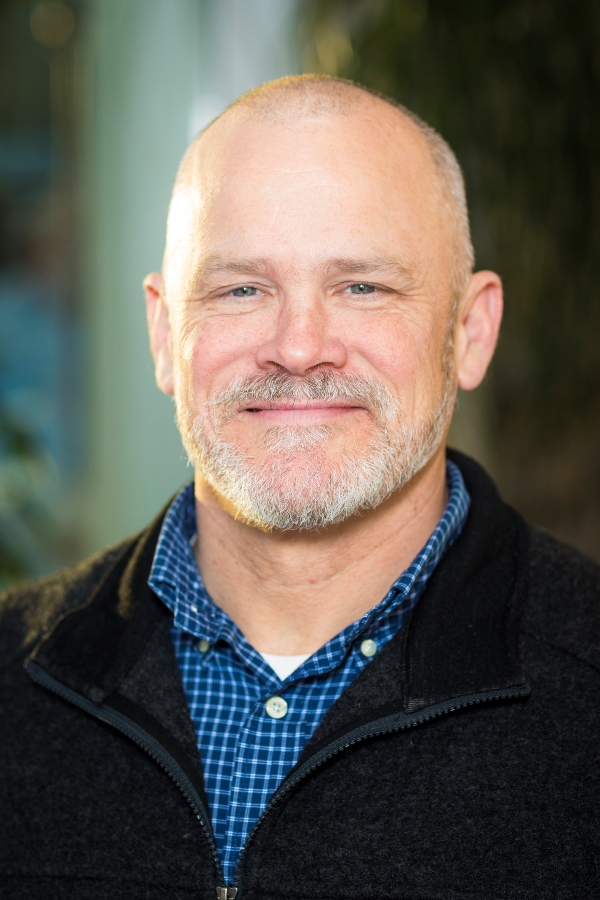
Trey Coker is a new OIPC Ambassador Photo by JR Ancheta/UAF.
In 2017, OIPC launched its Ambassador program and introduced its first Ambassadors, Rajive Ganguli and Peter Webley. The Ambassadors are OIPC liaisons, around campus and in the community, promoting innovation and entrepreneurialism.
We’re now pleased to announce our third ambassador: Robert Coker. The Ambassador’s Corner is a new section where ambassadors will share information about innovations at UAF and UAS.
Ambassador’s Corner – by Robert “Trey” Coker
The proportion of individuals 65 years of age and over in Alaska has increased by almost 30% in the last six years. Soon, we will have the highest number of older individuals relative to the overall population in the entire United States. Coupled with an increasing shortage of opportunities for assisted living and rising health care costs nationwide, optimization of functional and cognitive capacity in this segment of the population is absolutely critical.
In addition to this exciting effort, we have established a nutrient formulation that may improve liver health in individuals suffering from alcohol abuse. Here at UAF, we are able to measure changes in liver lipids using magnetic resonance imaging/spectroscopy instrumentation that would normally be available only at some of the best medical schools in the country. While it has taken almost five years to get to this point, the acquisition of the NIH grants allowed us to generate compelling data and formulate several products without diluting the ownership of Essential Blends, LLC.
The Office of Intellectual Property and Commercialization at UAF assisted us in our endeavors and they can also help you pursue your own dream of delivering innovation to the state of Alaska and beyond. I accepted a position as an Associate Professor at the University of Alaska Fairbanks to develop a clinical research program in the summer of 2013. I also co-founded Essential Blends, LLC, headquartered in Fairbanks, AK. During my prior tenured appointment at the University of Arkansas for Medical Sciences, I learned the value of transforming research findings into products with direct beneficial impacts on health. Essential Blends, LLC now leads the state of Alaska in Small Business Innovations in Research/Technology Transfer grants from the National Institutes of Health (NIH). This support and work is specifically focused on the development of proprietary nutrition strategies for our aging population.
If you see an Ambassador around town, take the opportunity to introduce yourself and learn more. They, too, will be looking for you – UAF’s brightest minds with the next ideas that will help shape our world.
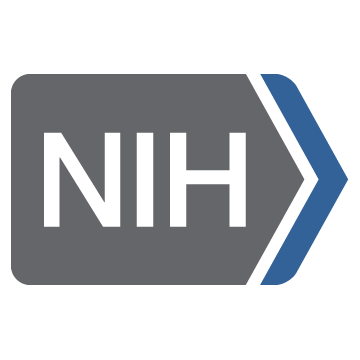 Funding Opportunity Now Available for 2018 Summer Cohort of I-Corps at NIH
Funding Opportunity Now Available for 2018 Summer Cohort of I-Corps at NIH
I-Corps is a great program that's been available only for NSF-related research - until recently. Now, NIH has picked up the program.
I-Corps is an intense program and true time commitment. However, it also may be the most assured way of knowing whether your product has a market and getting it there efficiently. Acceptance into the I-Corps program comes with a $50,000 grant.
NIH I-Corps applications are due March 5, 2018. Learn more here.
 SBIR/STTR Funding Deadlines
SBIR/STTR Funding Deadlines
NASA SBIR and STTR Phase I Program Solicitation closes March 9.
DOT SBIR Solicitation closes March 20, 2018
NIST SBIR Phase I Notice of Funding Opportunity closes April 4, 2018
HHS Solicitation Schedule is released with multiple closing dates.
 Alaska Business Plan Competition
Alaska Business Plan Competition
Since 1999, the University of Alaska Anchorage and Alaska Pacific University have worked with local corporate sponsors and the business, investor, and startup community to provide entrepreneurs with the opportunity to present their startup to the public and validate their business ideas.
The deadline for submitting business plans is Monday, April 2. The public pitch event is Wednesday, April 18 beginning 5:00 pm at the 49th State Brewery in Anchorage.
For more information on the Alaska Business Plan Competition, visit here.
February
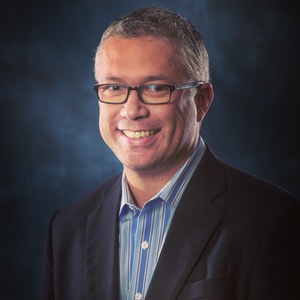 Sam Enoka's (UAF '95) career winds through alternative assets and technology, an MBA
from UC Berkeley, to venture capital and technology, hedge funds and commodity trading,
electricity markets and most recently, blockchain and ICO markets. Sam has helped
raise over $350M in investment and capital in his various start-ups over his career.
Sam is on campus to discuss Greensparc and their recent entry into the ICO (initial coin offering) market, CirrusCoin.
Sam Enoka's (UAF '95) career winds through alternative assets and technology, an MBA
from UC Berkeley, to venture capital and technology, hedge funds and commodity trading,
electricity markets and most recently, blockchain and ICO markets. Sam has helped
raise over $350M in investment and capital in his various start-ups over his career.
Sam is on campus to discuss Greensparc and their recent entry into the ICO (initial coin offering) market, CirrusCoin.
Enoka is visiting Fairbanks in February and will be presenting his insights into technology and entrepreneurship at 2pm on Monday, Feb. 5 in the BP Design Theater.
This event is open to all interested UAF students, staff, and faculty. Members of the Fairbanks entrepreneur community are also welcome to attend.
 Apply now for an intense three-day workshop designed to teach participants how to
take university research and other great ideas from concept to commercialization.
Apply now for an intense three-day workshop designed to teach participants how to
take university research and other great ideas from concept to commercialization.
This workshop, on Mar. 12-14, is based on the Lean Startup methodology for developing products and companies and is led by Steve Weinstein who teaches a similar course at the University of California Berkeley and Stanford.
Through this workshop, participants will:
- Learn what it really takes to develop a viable product or be part of a startup company
- Team up with multidisciplinary talent from across the UA system
- Leave knowing the next steps you need to take on your road to success
- Take giant leaps forward with your innovation or technology
- Get connected with the right people and resources
- Applications are open to interested members from the UA community, including faculty, staff, and students. The course is limited to 25 participants with priority enrollment offered to individuals who are actively working on commercializing an idea.
Visit Lean Launch 18 to learn more and apply now for the Mar. 12-14 workshop.
Full day participation is required for this workshop. Registration closes February
9th. Contact UAF's Office of Intellectual Property and Commercialization with questions: uaf-oipc@alaska.edu
or 474-2605.
This course is sponsored by the Office of Naval Research and co-hosted by BMNT.
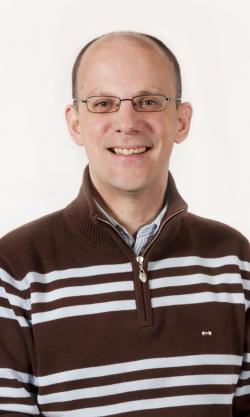 Peter Webley co-founded the first start-up company from UAF intellectual property.
V-ADAPT, Inc.
Peter Webley co-founded the first start-up company from UAF intellectual property.
V-ADAPT, Inc.
Learn how the volcanic remote sensing group at the Geophysical Institute created this start-up and now provides their tools to the worldwide transportation community.
Webley is an OIPC ambassador and Research Associate Professor of Remote Sensing at the Geophysical Institute.
I2 will be held on Monday, February 22nd, at 4:30 p.m. on the 4th floor of ELIF (the new engineering building) in the BP Design Theater. Webley's short presentation will be followed by a social mixer and informal question-and-answer session.
For more details on I2 events, contact OIPC Ambassadors Peter Webley (pwwebley@alaska.edu), Rajive Ganguili (rganguli@alaska.edu), and Robert Coker (rcoker@alaska.edu).

Photo: Ben Kellie works at the Boardroom in downtown Anchorage, January 5, 2018. Kellie returned to Alaska from work launching rockets for SpaceX to begin a company serving rural Alaska with drones. (Charles Wohlforth / ADN)
This story is reprinted with permission from Anchorage Daily News.
Ben Kellie took a short path from helping his bush pilot father in Nikiski to launching SpaceX rockets in California. Now he's back working in rural Alaska aviation, but with skills for technology innovation he learned in the commercial space industry.
Kellie rose rapidly at SpaceX, overseeing the launch of a new generation of rocket from a brand-new pad that he helped build. He also led the field team building the barge where the company famously landed its first rocket for reuse.
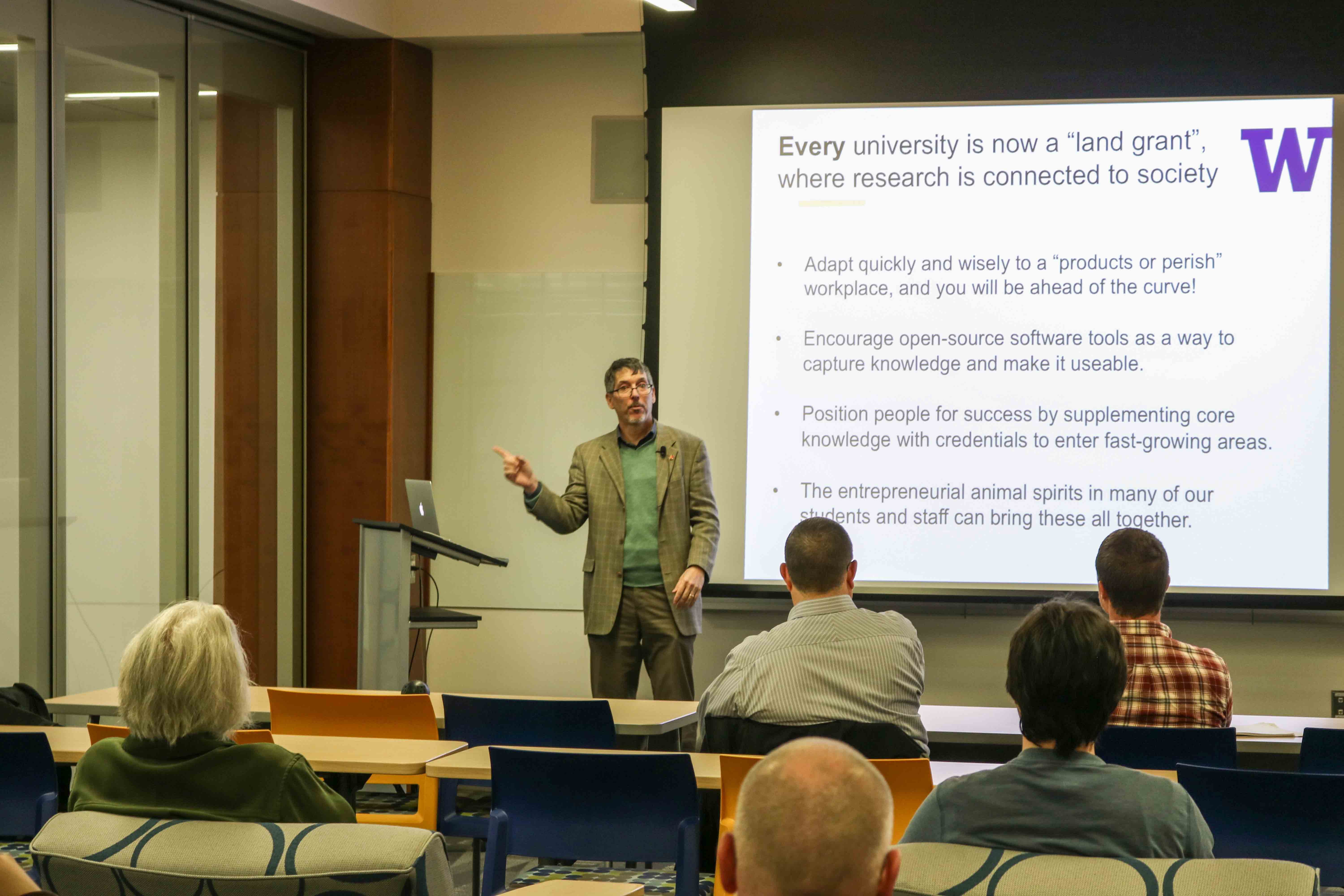
Dan Schwartz presents at the January I2 event in the BP Design Theater. Photo by Amanda Byrd/OIPC.
OIPC recently hosted Daniel Schwartz, Director of the Clean Energy Institute at the University of Washington, at an Innovation Initiative event and at a brown bag lunch where Schwartz presented insights into research commercialization and marketplace megatrends gained from experience at UW and Washington state.
Schwartz gave examples of UW entrepreneurship initiatives and how the university has capitalized on their research and development. He also held meetings with OIPC staff and ambassadors to discuss university innovation opportunities.
Innovation Initiative events are held monthly. Contact OIPC Ambassadors Peter Webley (pwwebley@alaska.edu), Rajive Ganguili (rganguli@alaska.edu), and Robert Coker (rcoker@alaska.edu).
Two summer research programs hosted by UW, "Clean Energy Bridge to Research" and "Molecular Engineering Materials Center" offer opportunities for UA undergraduate students. The programs offer stipends, housing and travel. Students can work in physics, chemistry, chemical engineering, materials science and engineering, or electrical engineering labs. Applications are due by Feb. 16. Community college or high school teachers can also gain research experience
 I-Corps is a great program that's been available only for NSF-related research - until
recently. Now, NIH has picked up the program.
I-Corps is a great program that's been available only for NSF-related research - until
recently. Now, NIH has picked up the program.
I-Corps is an intense program and true time commitment. However, it also may be the most assured way of knowing whether your product has a market and getting it there efficiently. Acceptance into the I-Corps program comes with a $50,000 grant.
NIH I-Corps applications are due March 5, 2018. Learn more here.
 The National Institutes of Health (NIH) SBIR/STTR Program released the HHS SBIR/STTR PHS 2018-2 Grant Omnibus/Parent Solicitations; some will require Clinical Trials and others will not allow them.
The National Institutes of Health (NIH) SBIR/STTR Program released the HHS SBIR/STTR PHS 2018-2 Grant Omnibus/Parent Solicitations; some will require Clinical Trials and others will not allow them.
Two informational webinars will be held in February to present new SBIT/STTR submittal guidelines.
1. HHS SBIR/STTR PHS 2018-2 Grant Clinical Trial Parent Webinar
- Tuesday February 6, 2018, 2-4PM EST
- Please register here: GoTo webinar
2. HHS SBIR/STTR PHS 2018-2 Grant Non-Clinical Trial Omnibus Webinar
- Wednesday February 7, 2018, 2-4PM EST
- Please register here: GoTo webinar
January
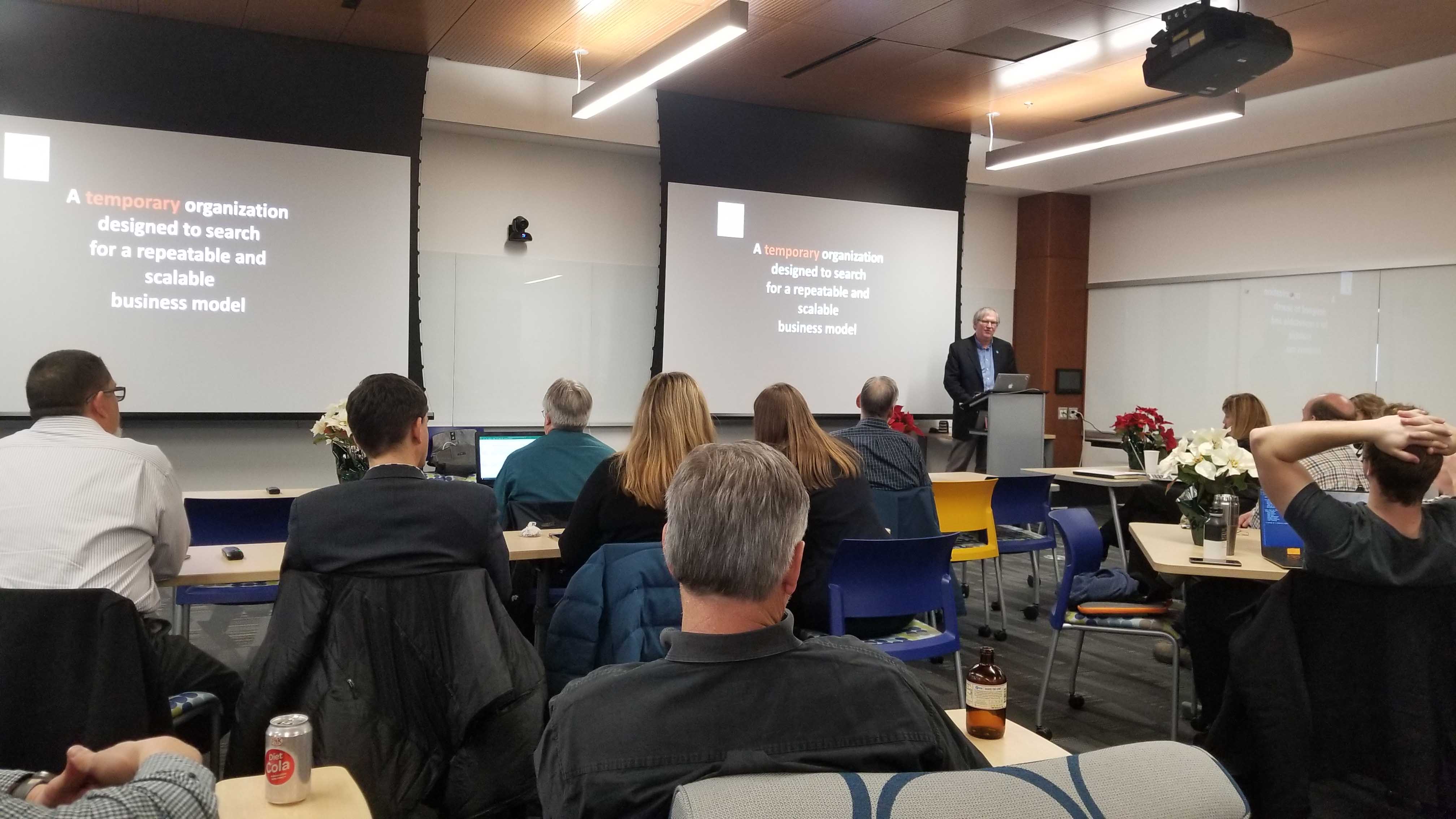
Steve Weinstein presented the Lean Startup Method. Photo by Amanda Byrd/OIPC.
During a brown bag lunch in December, Fairbanksans were hooked by the incisive approach to developing a technology and starting a company laid out by guest speaker Steve Weinstein. His super-efficient approach focused the path forward for local entrepreneurs and innovators.
Weinstein teaches the Lean Startup and Business Model Canvas methods at Stanford and UC Berkeley. He’s in a good position to do so; Weinstein has vast experience as an entrepreneur and consultant to startup companies.
The presentation’s large audience learned Weinstein’s step-by-step plan for navigating from concept to startup company and knowing when to pivot the original concept into a marketable reality.
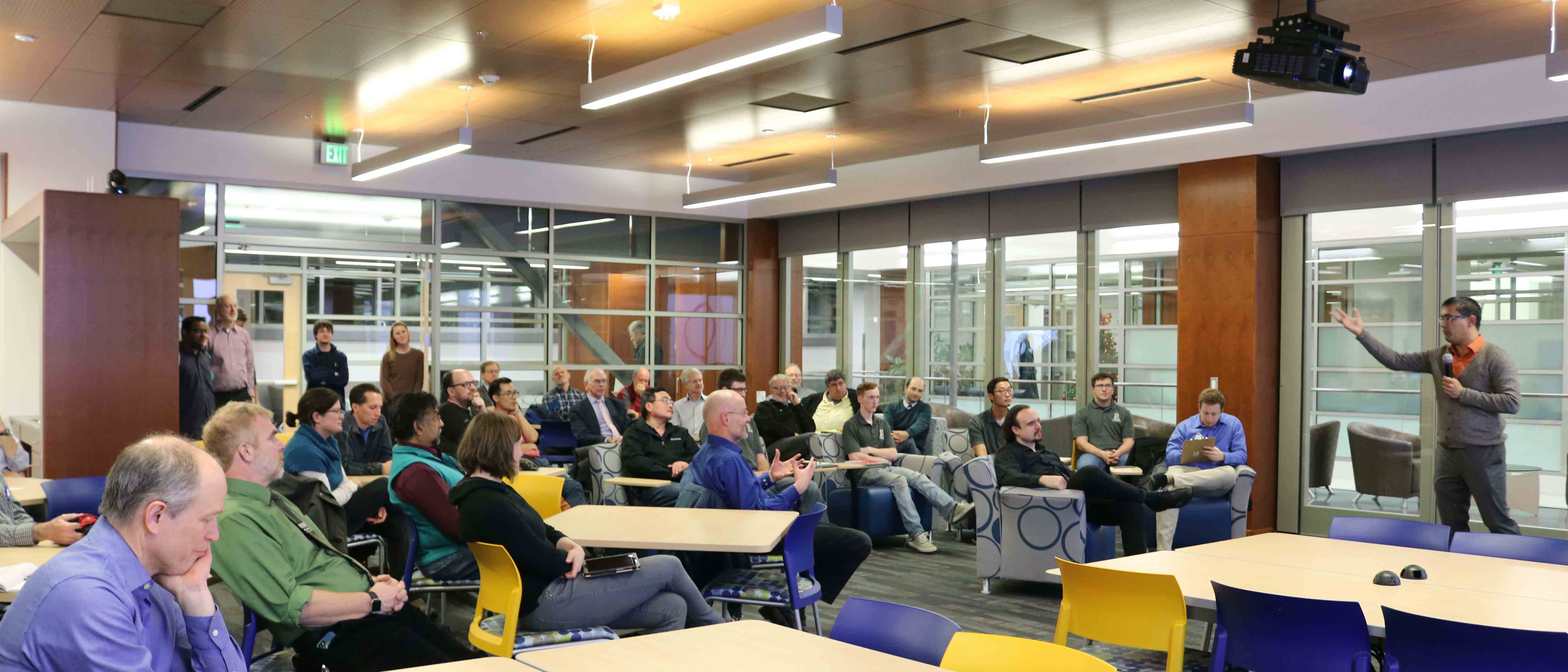
Rajive Ganguli addresses attendees of the first I2 event in the BP Design Theater on the 4th floor of ELIF. Photo by Amanda Byrd/OIPC.
OIPC is pleased to announce that the second I2 event will feature guest speaker Dr. Daniel Schwartz, a Boeing-Sutter Professor of Chemical Engineering and Director of the Clean Energy Institute at the University of Washington.
The first I2 event, held in December 2017, drew around 50 entrepreneurs, innovators, business professionals, and UAF faculty, staff, and students to the short presentation and social mixer.
Dr. Schwartz, having built a network at UW for achieving commercialization and assisted startup companies, highlights the benefits to university departments and employees of commercialization and describes the array of partnerships needed.
I2 will be held on Monday, January 22nd, at 4:30 p.m. on the 4th floor of ELIF (the new engineering building) in the BP Design Theater. Schwartz’s short presentation will be followed by a social mixer and informal question-and-answer session.
For more details on I2 events, contact OIPC Ambassadors Peter Webley (pwwebley@alaska.edu) and Rajive Ganguili (rganguli@alaska.edu).


